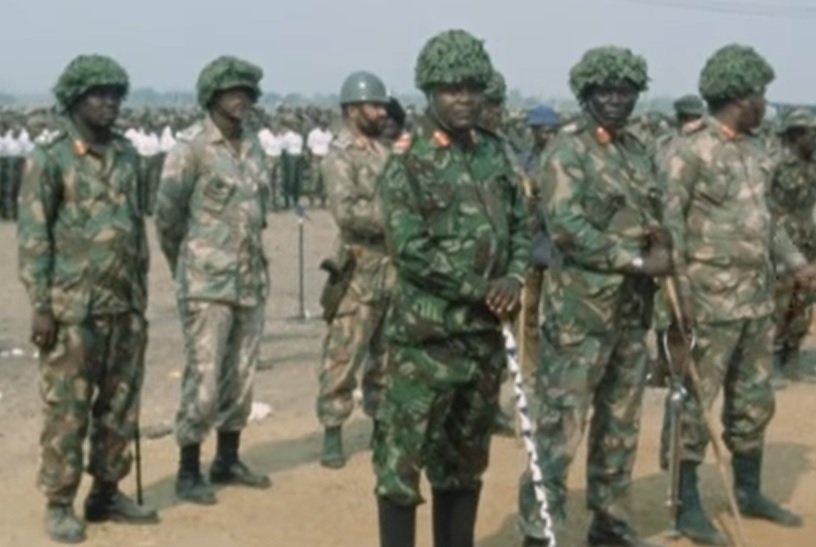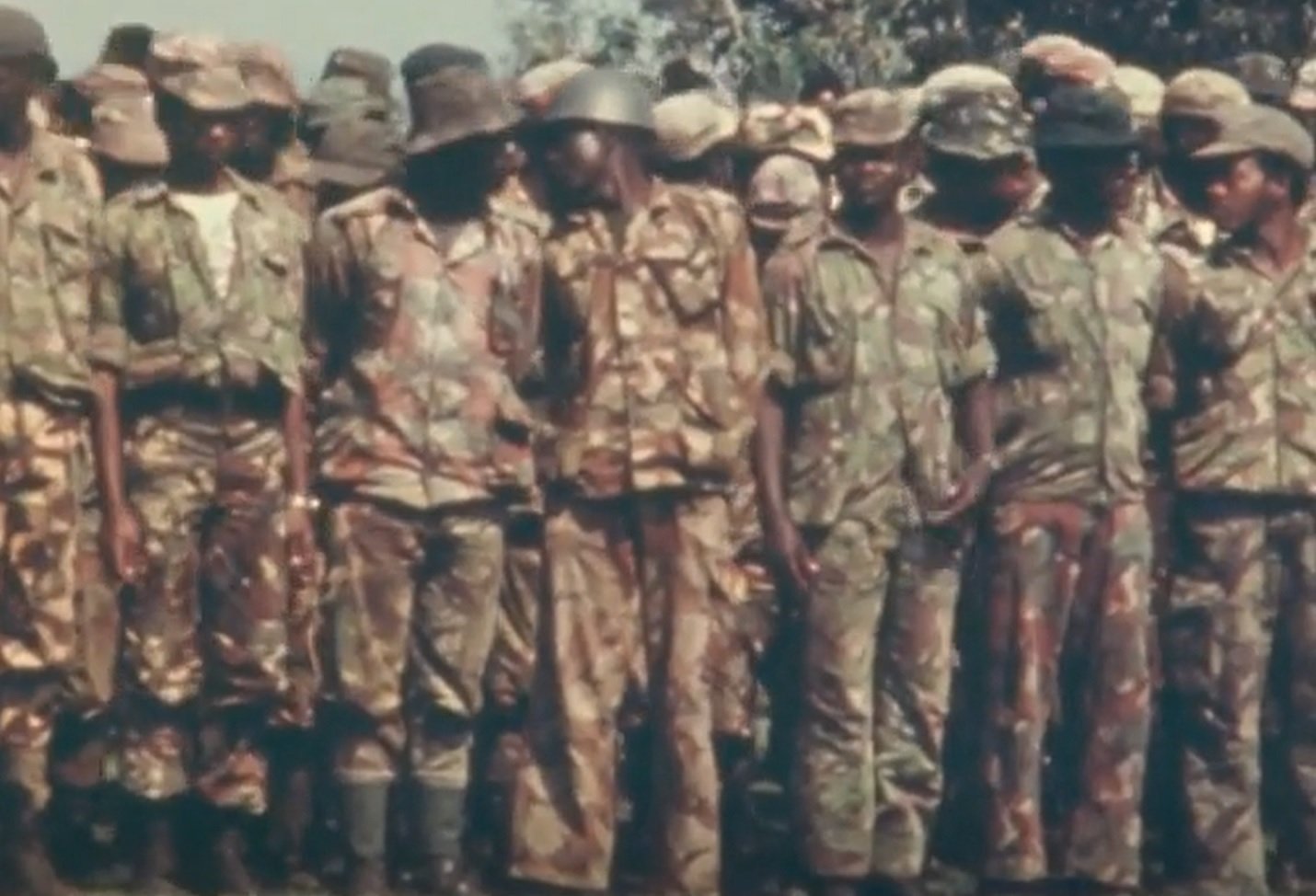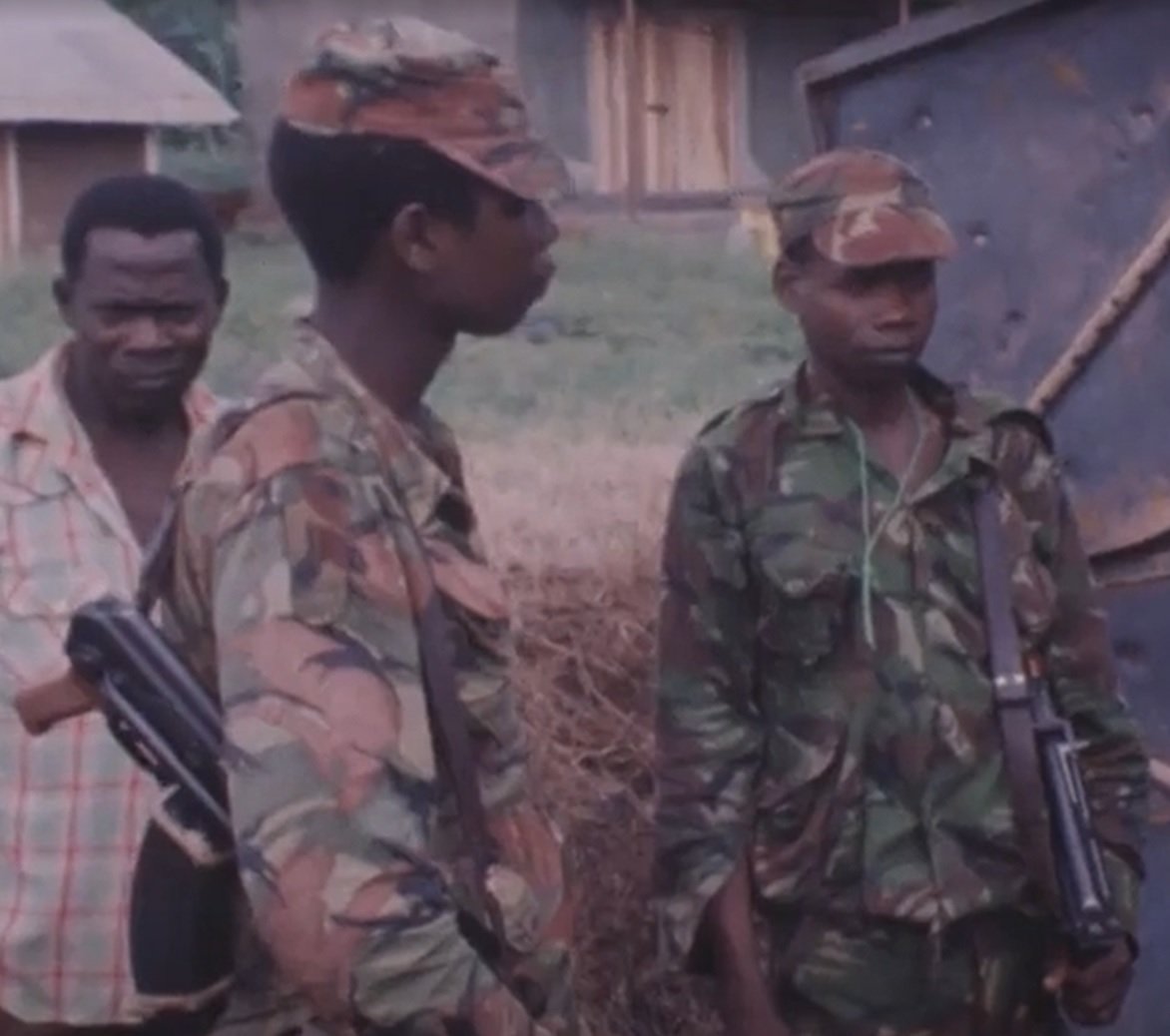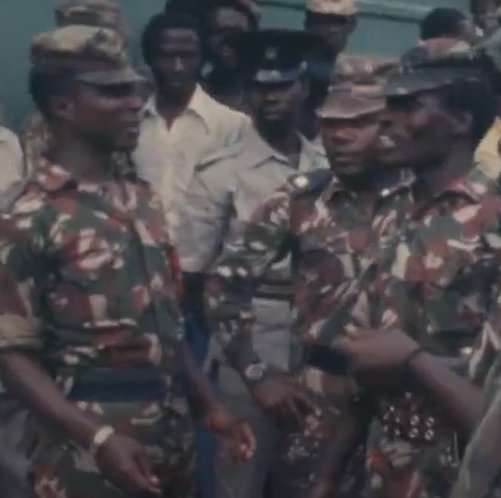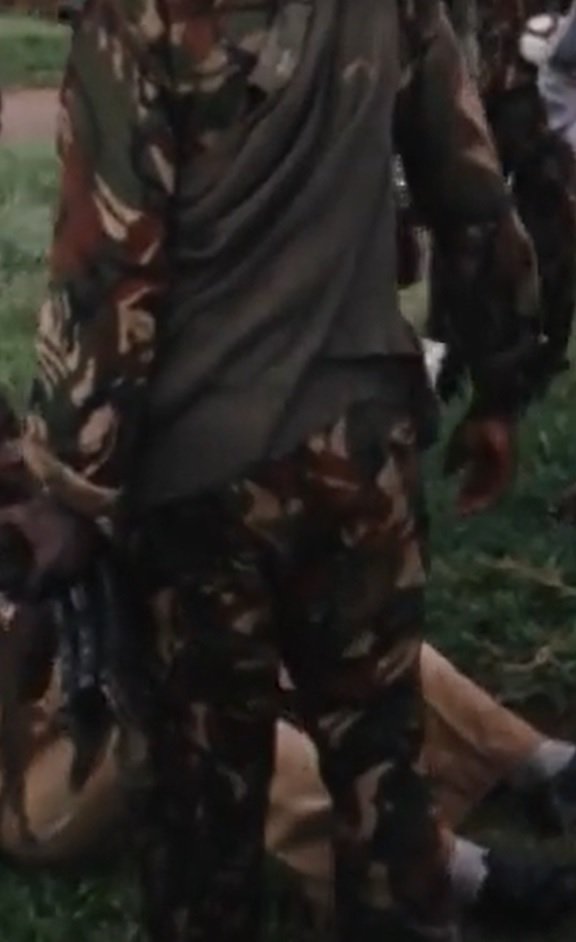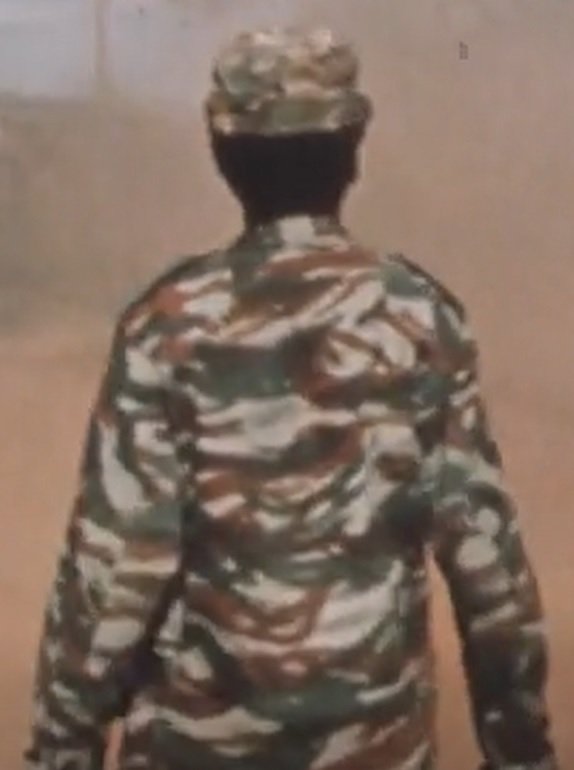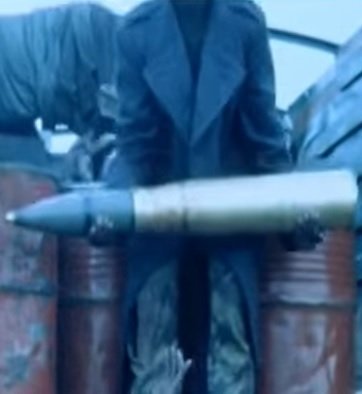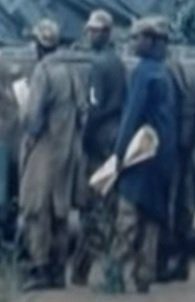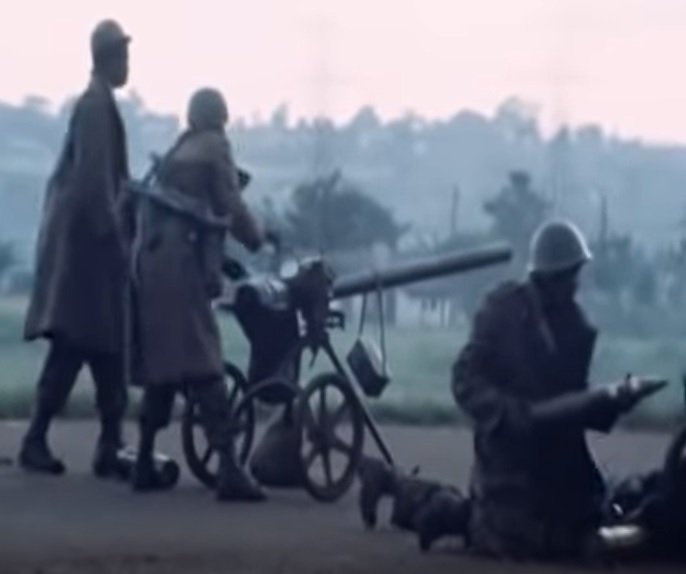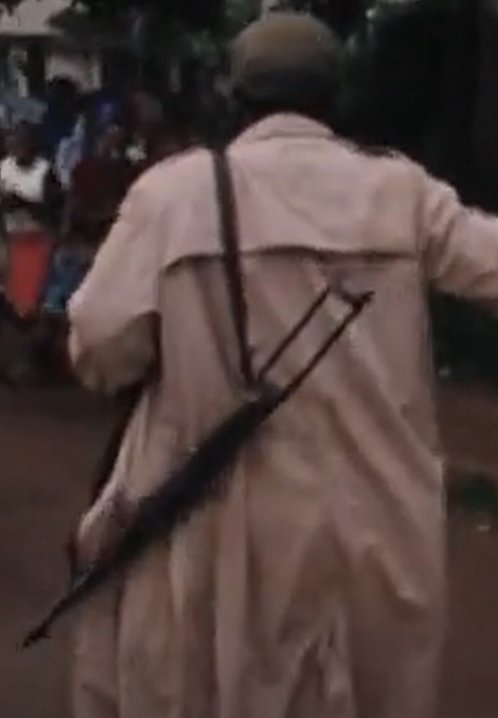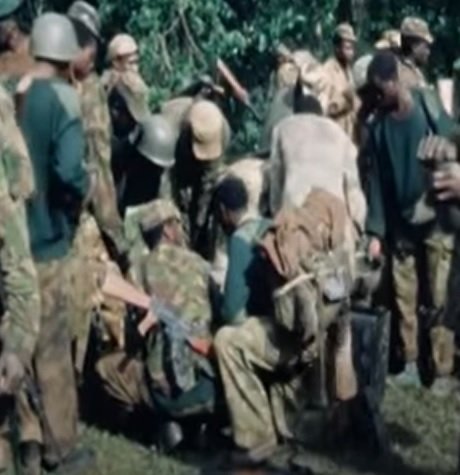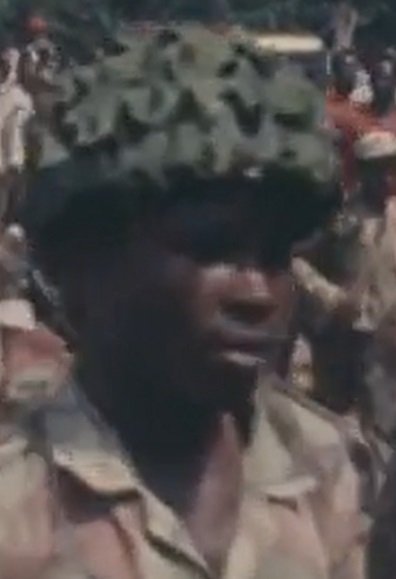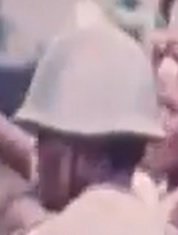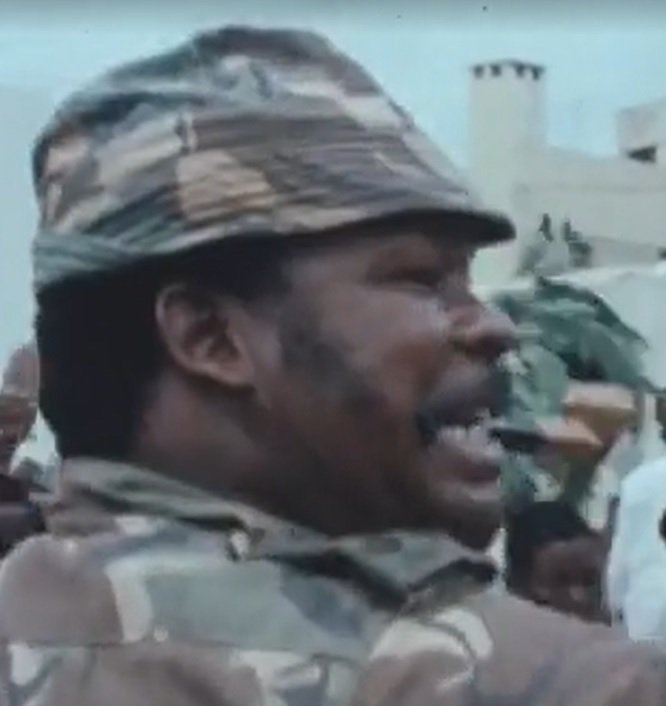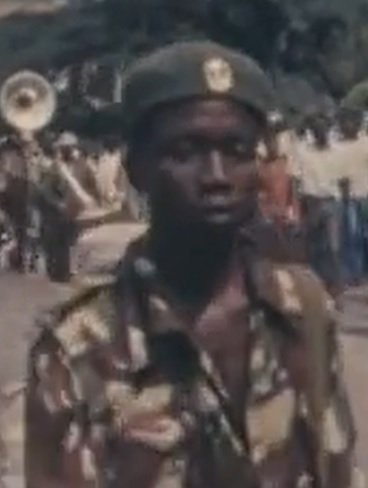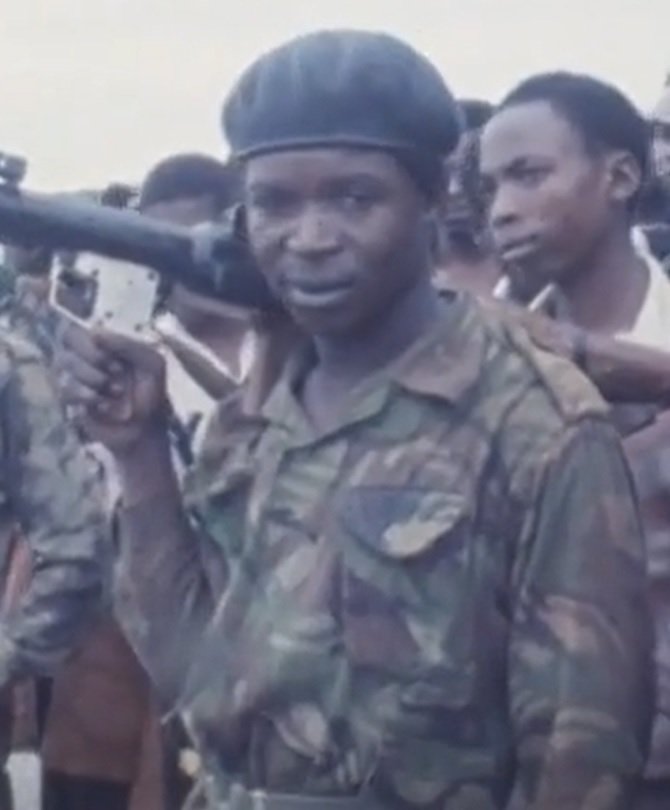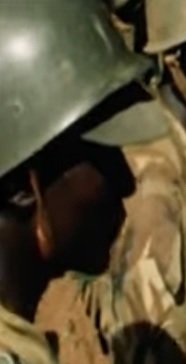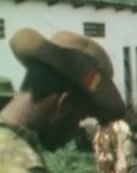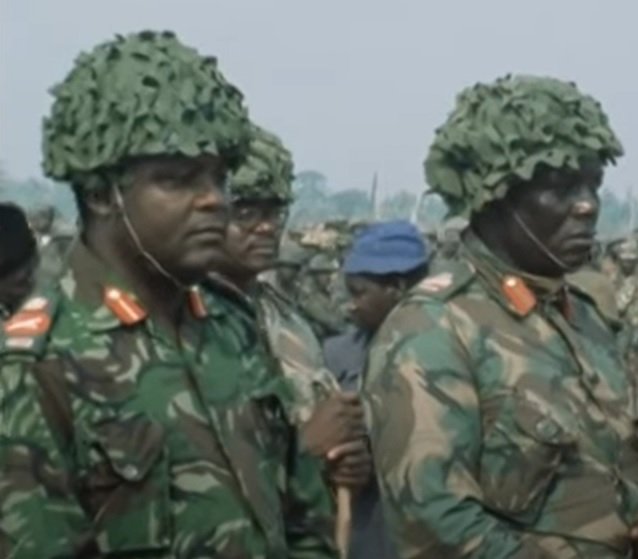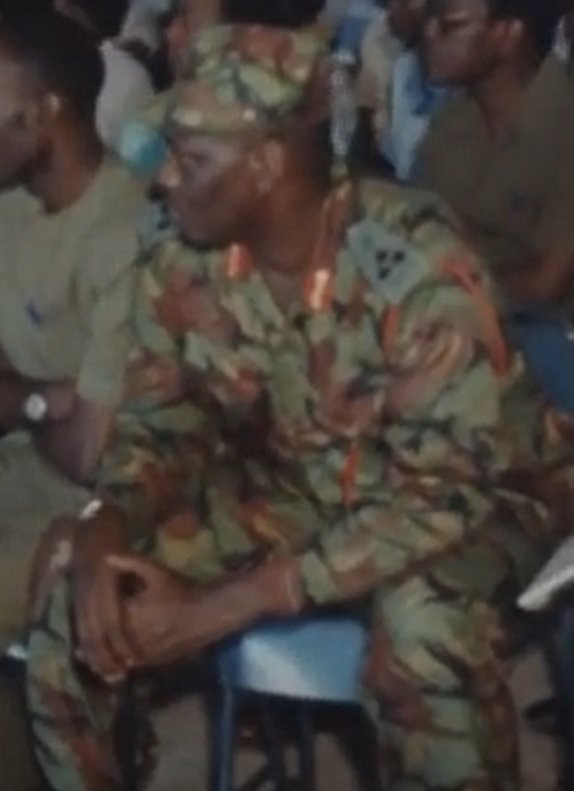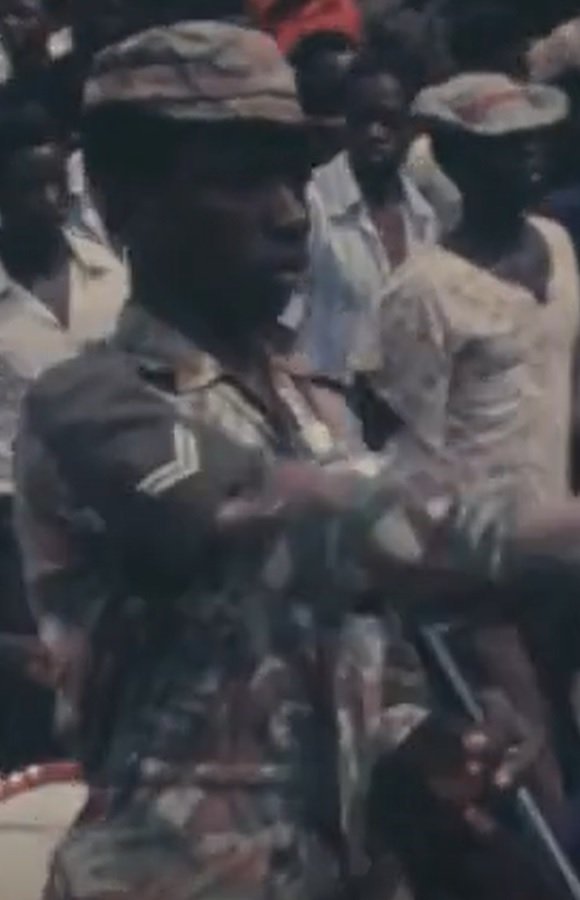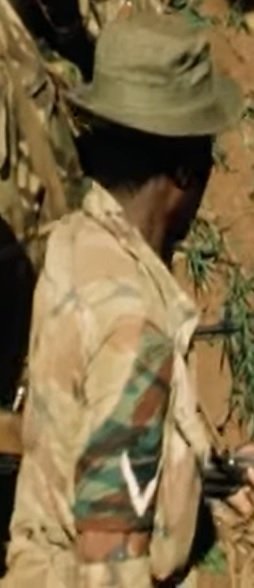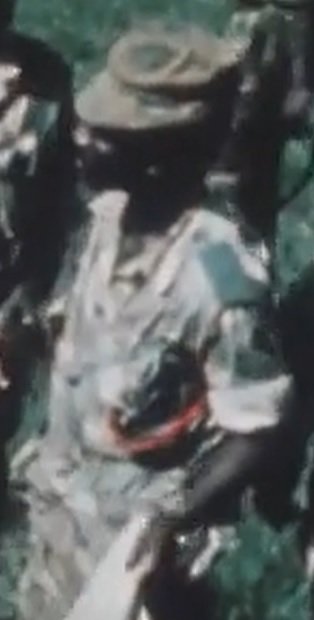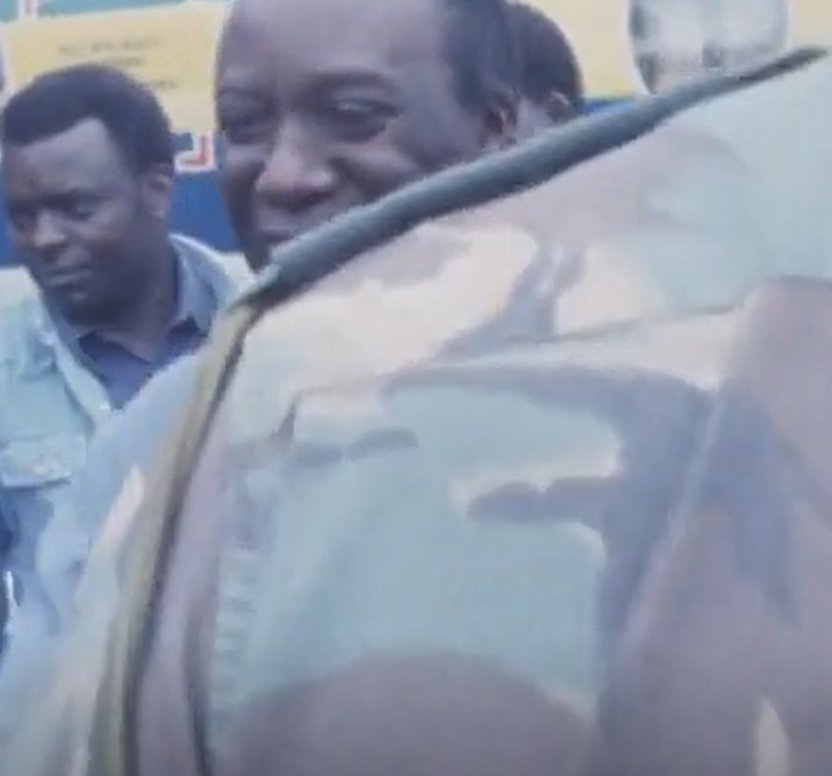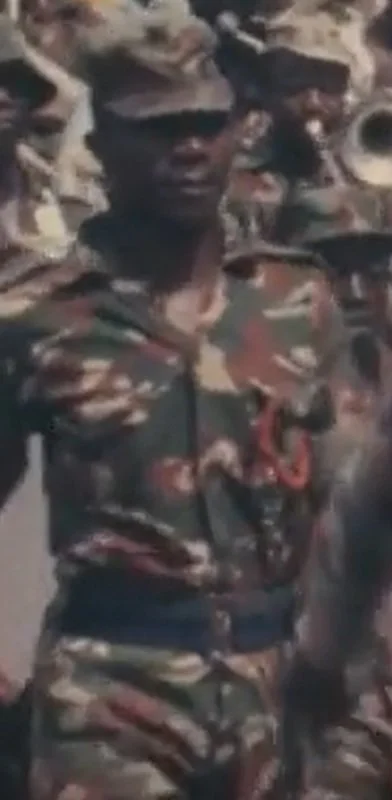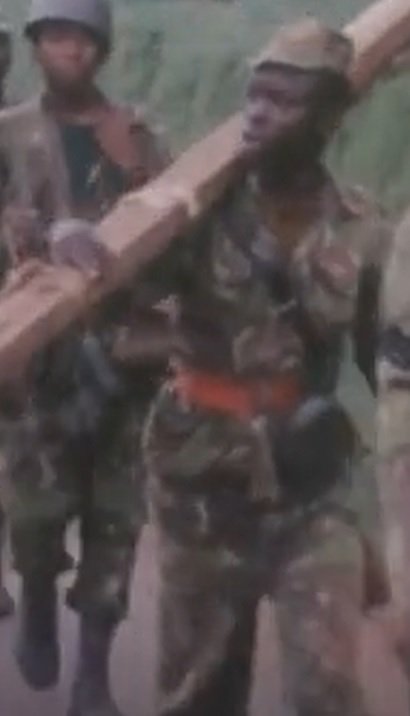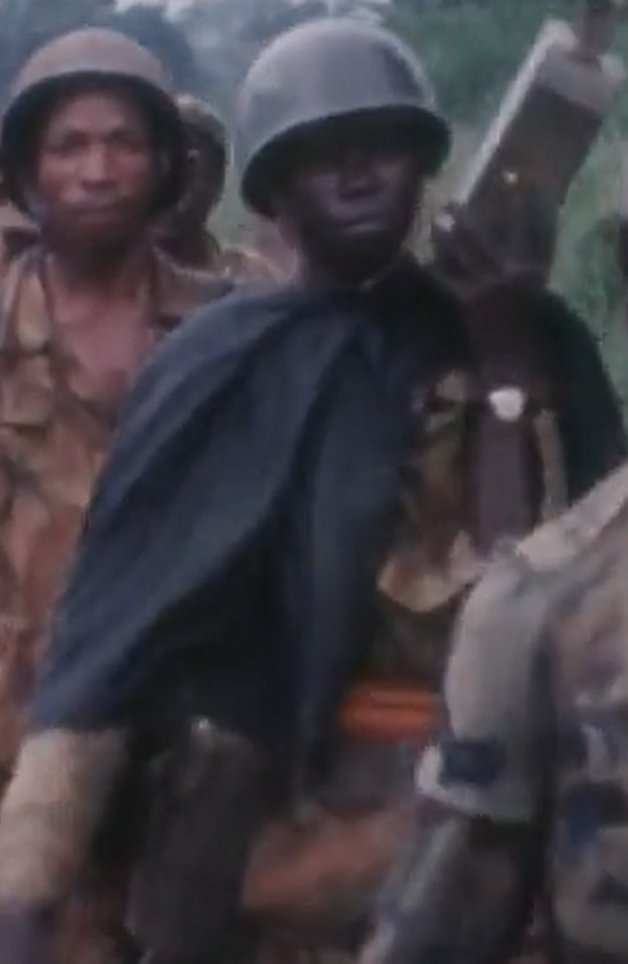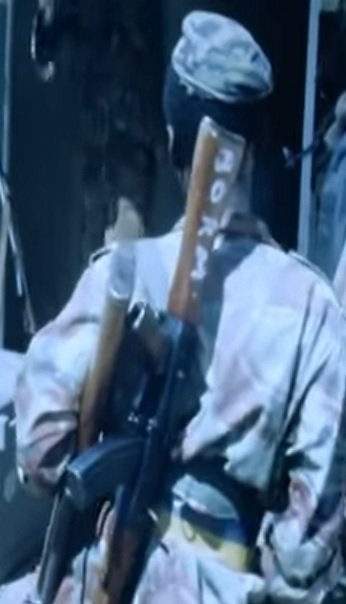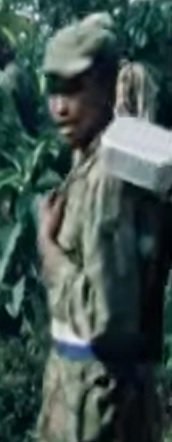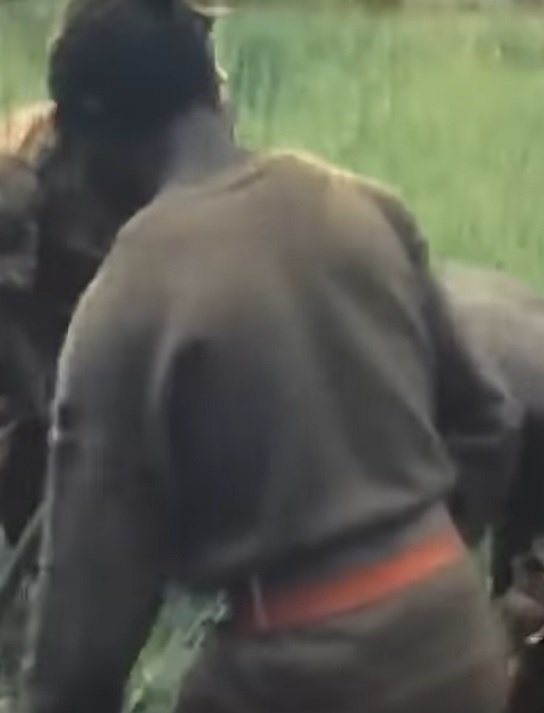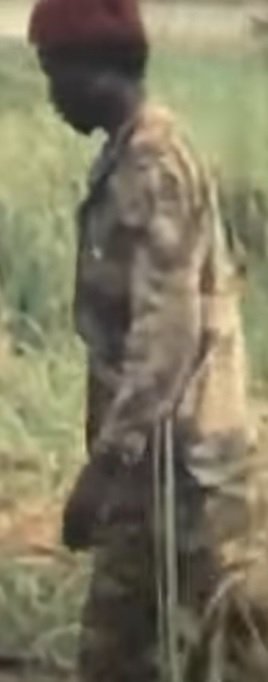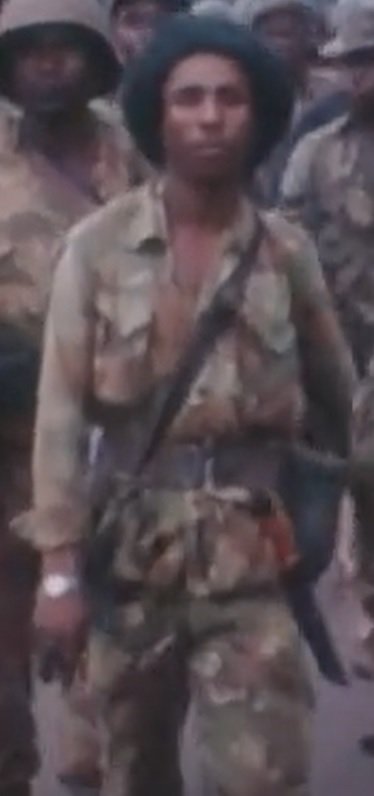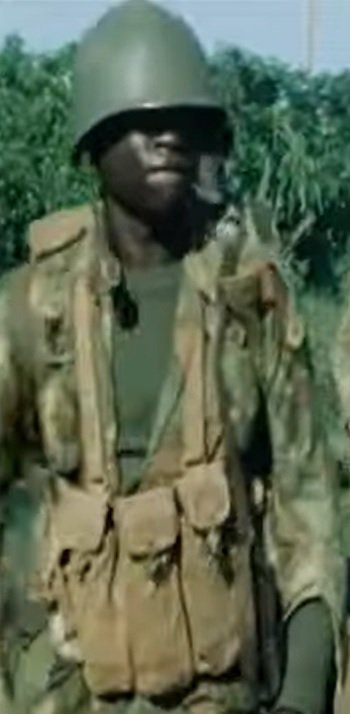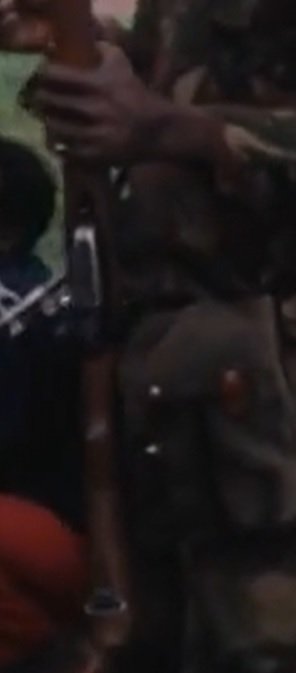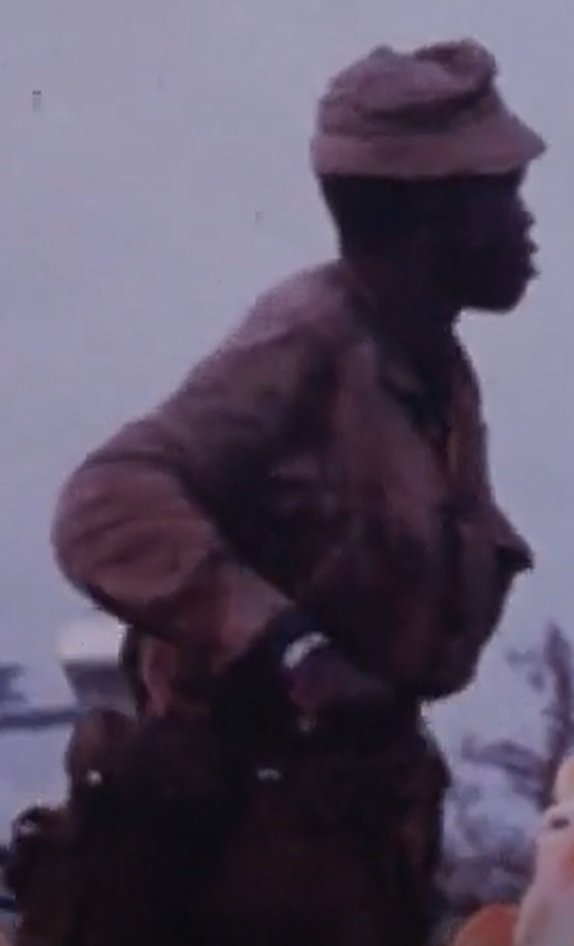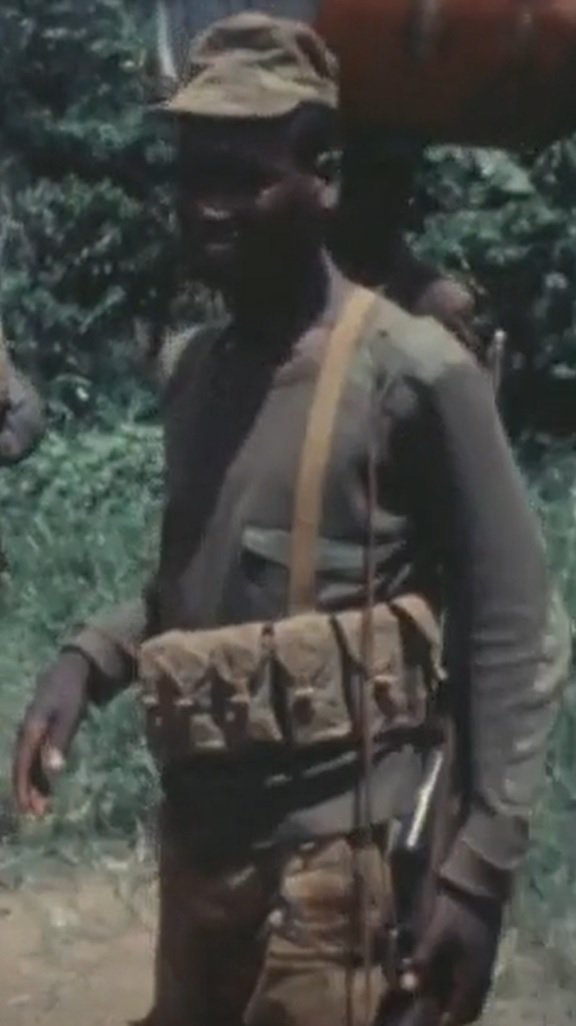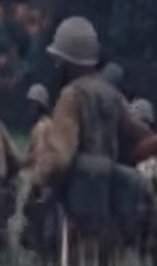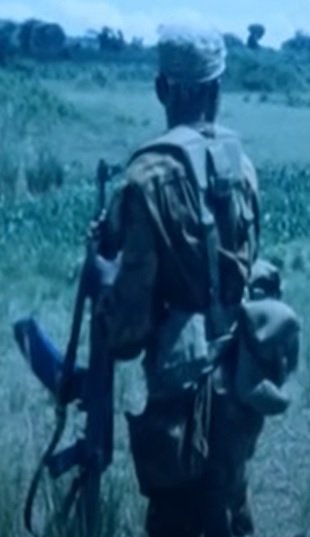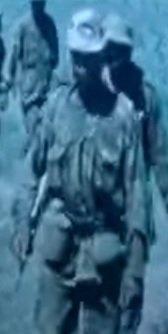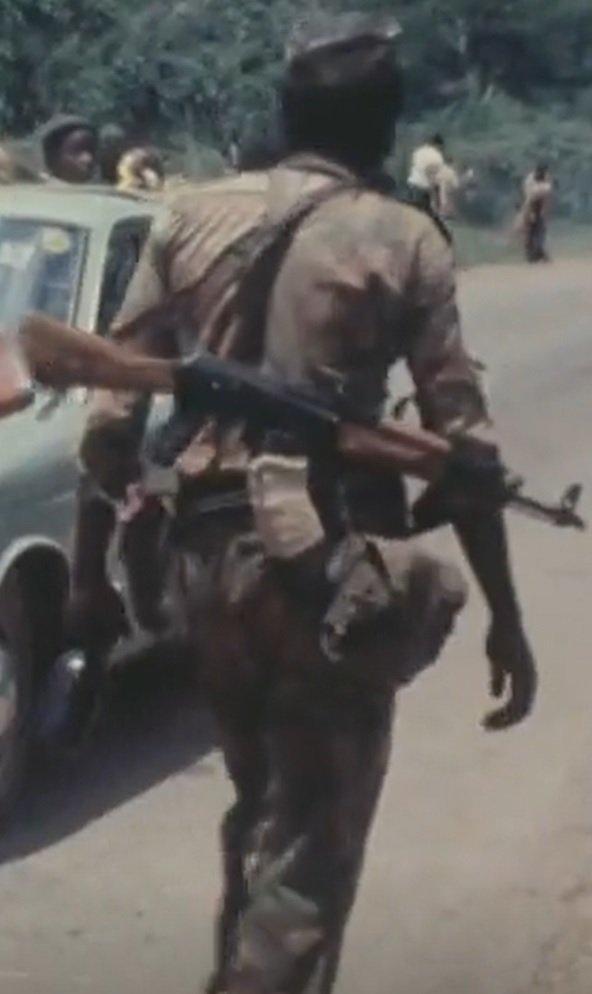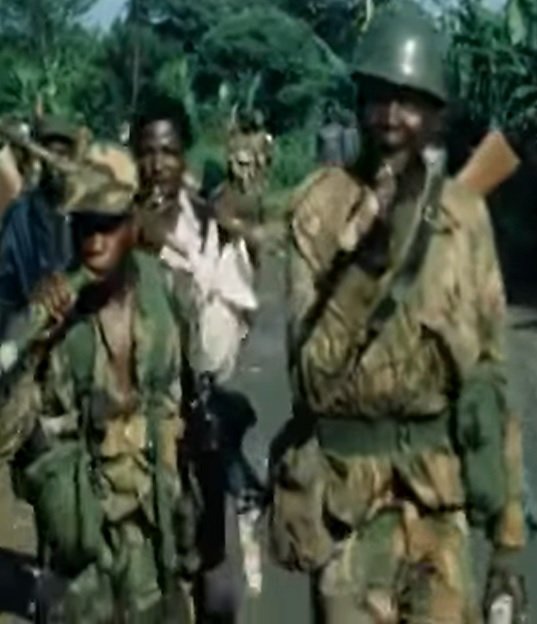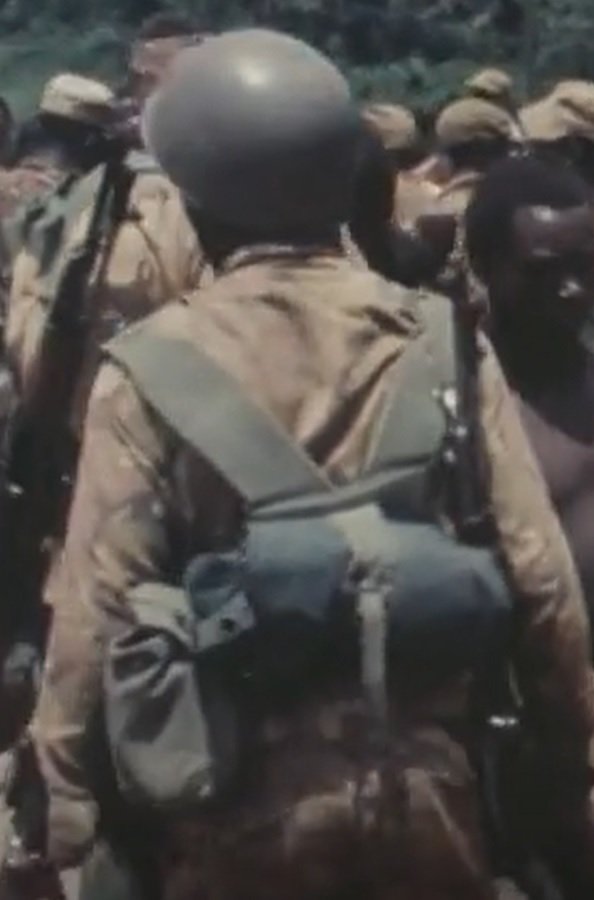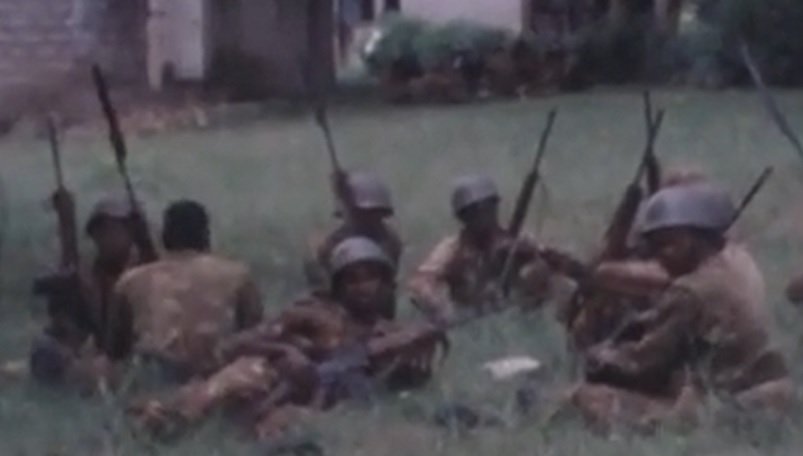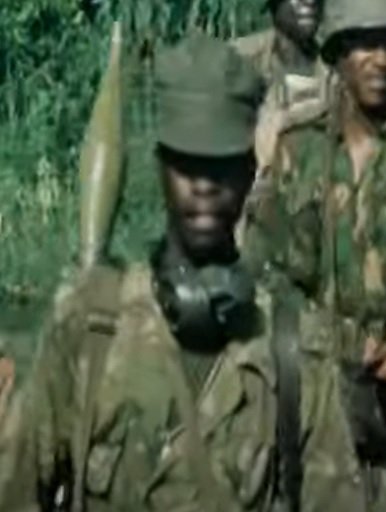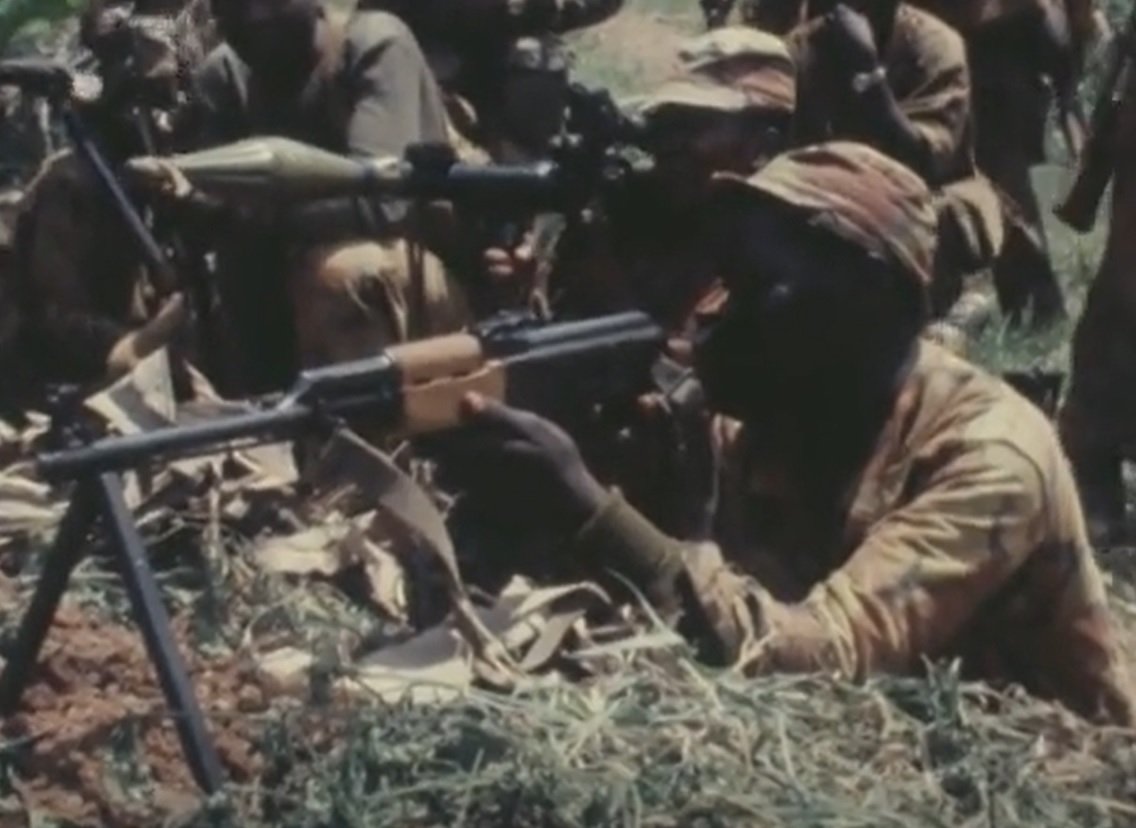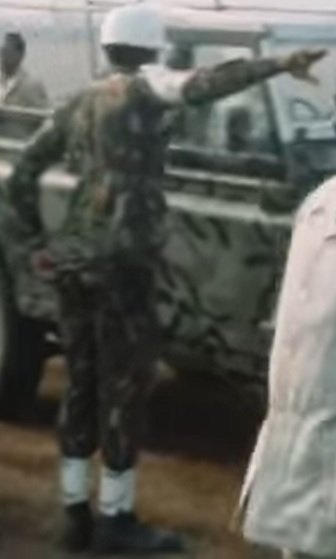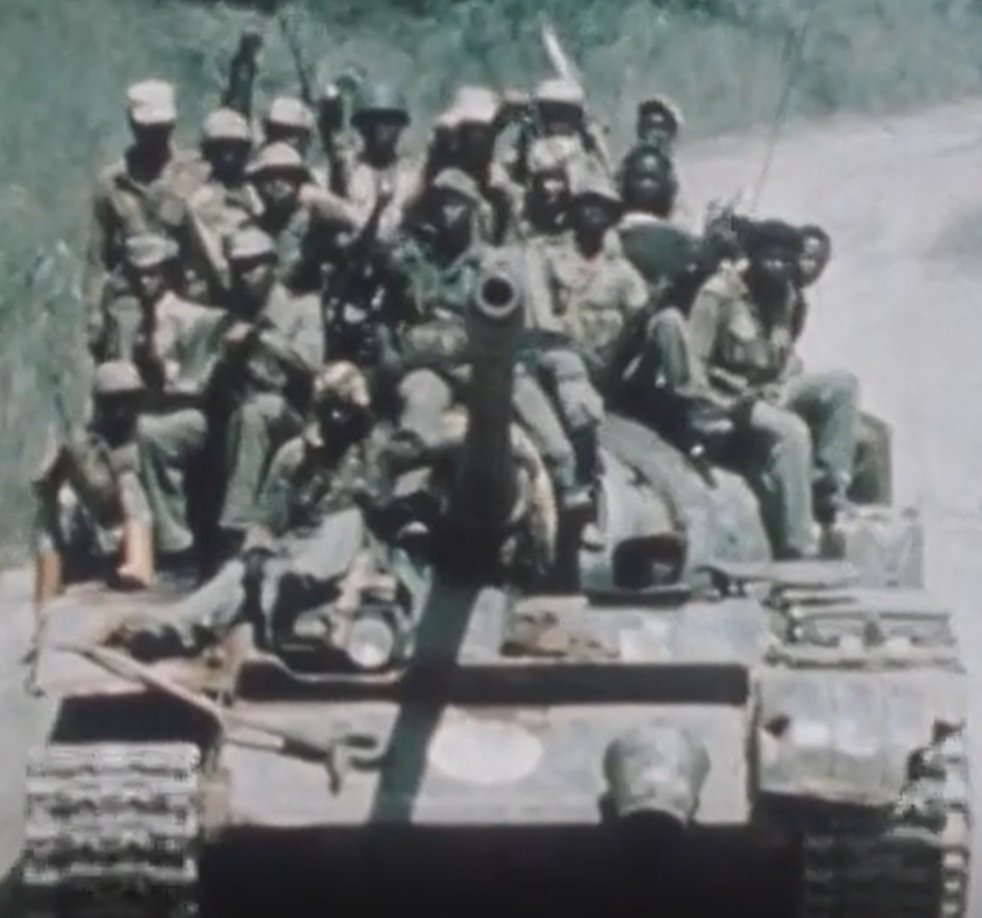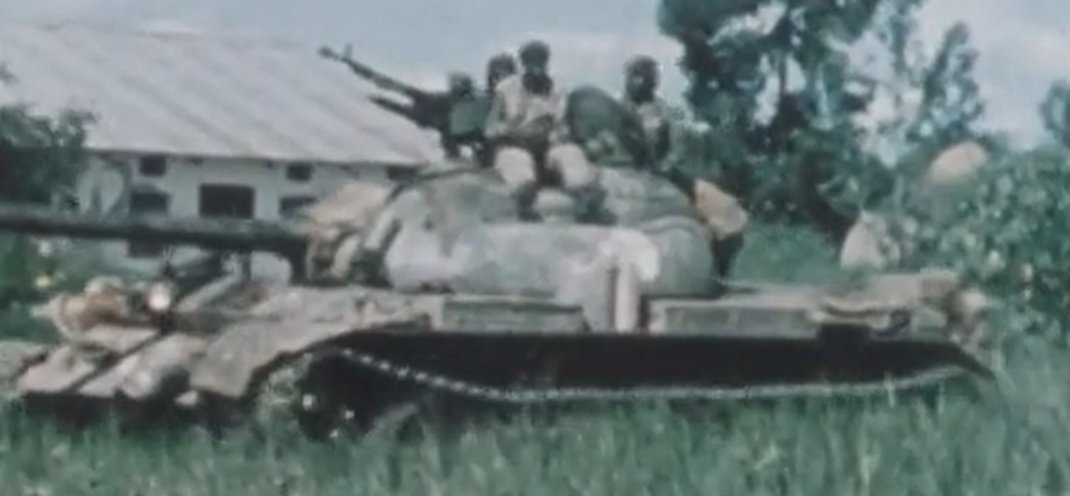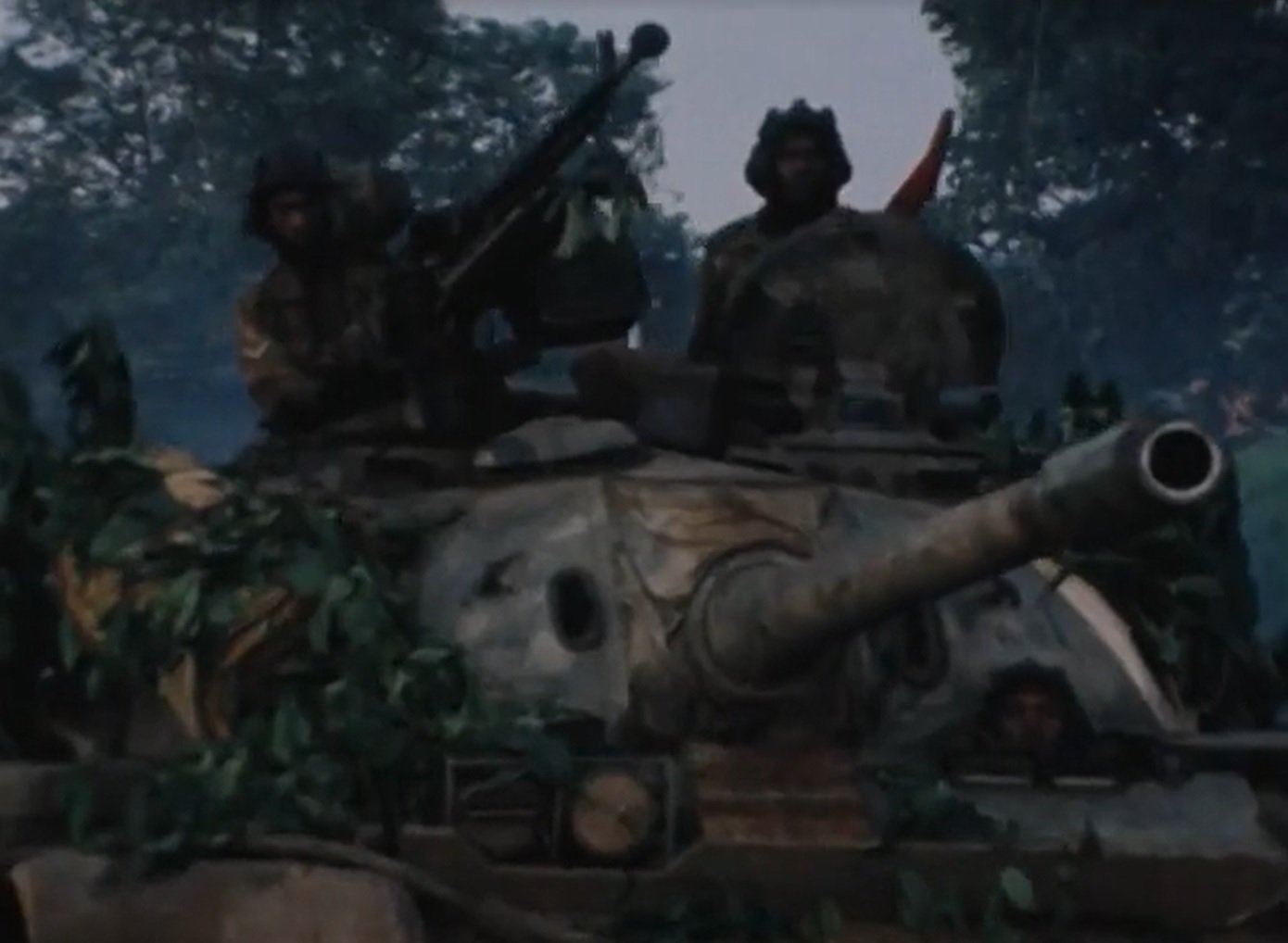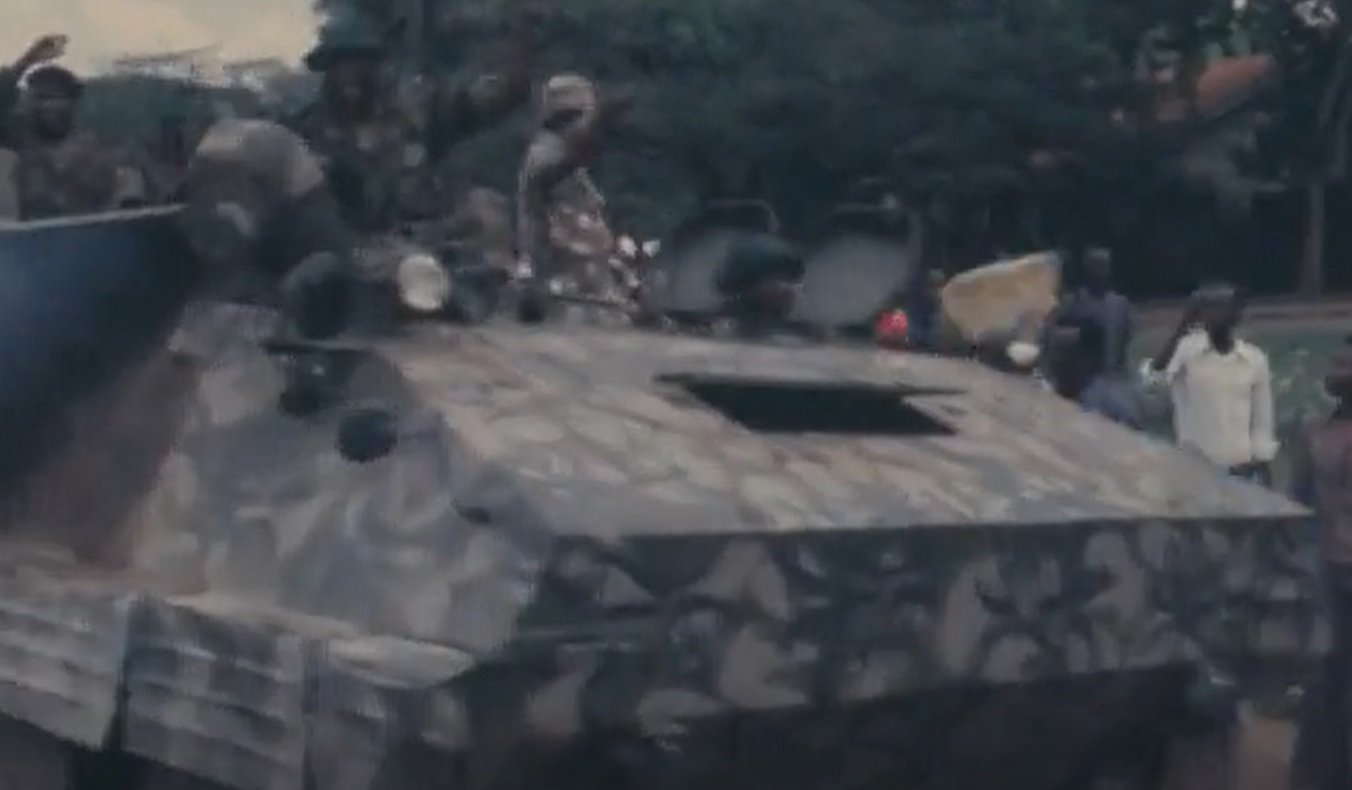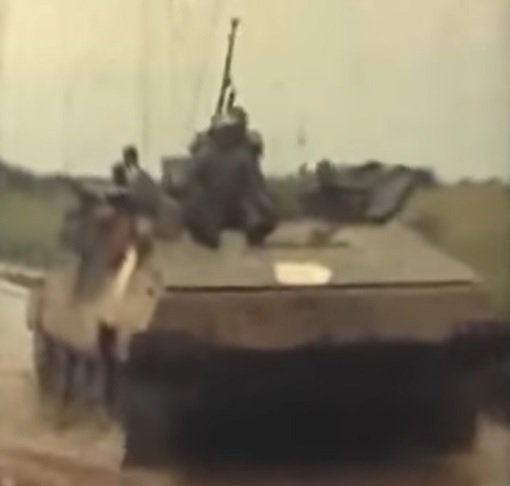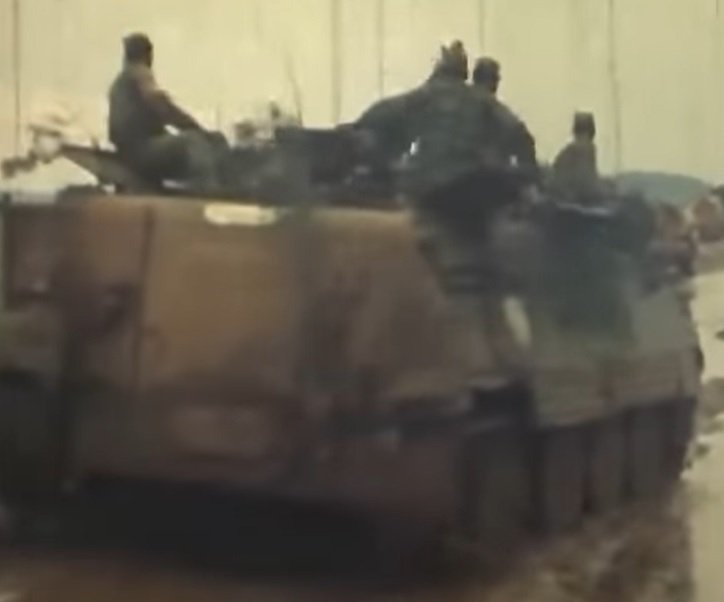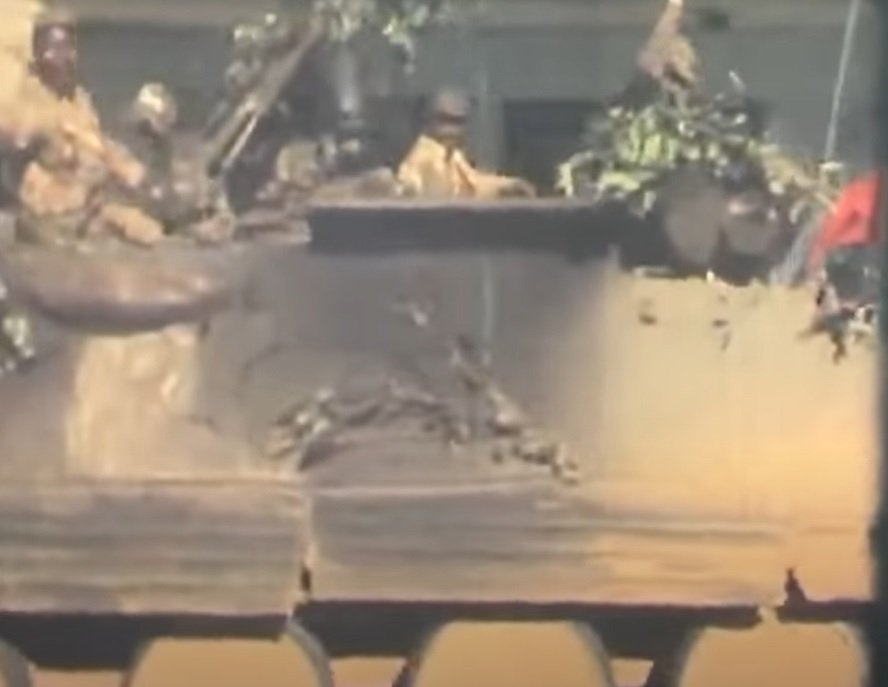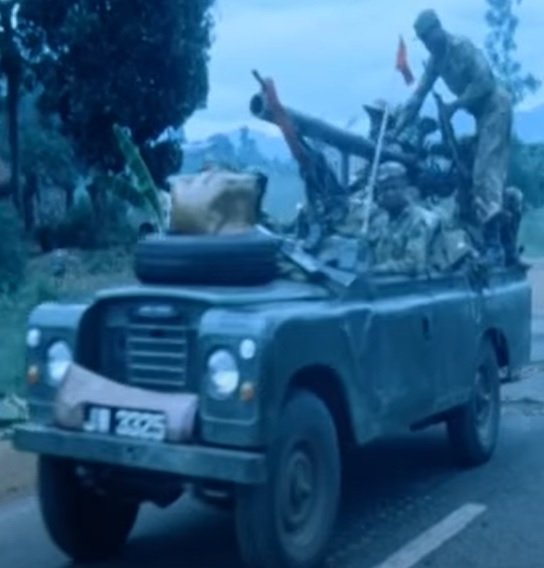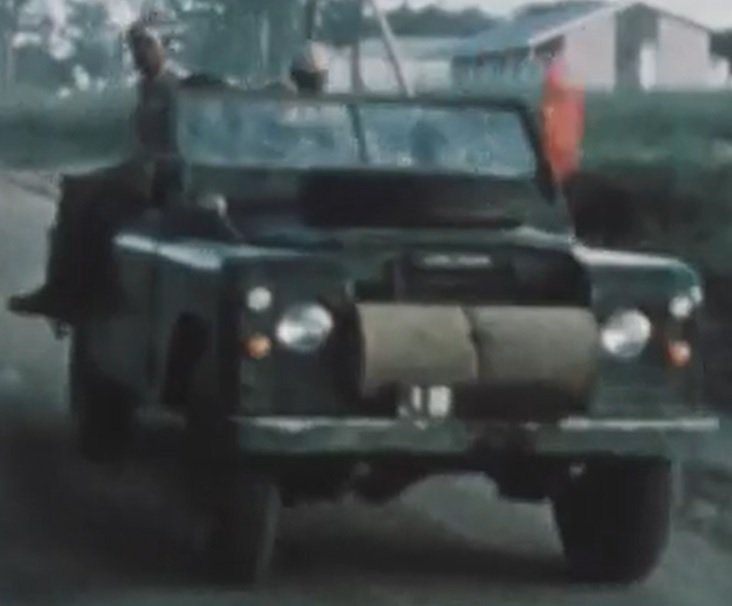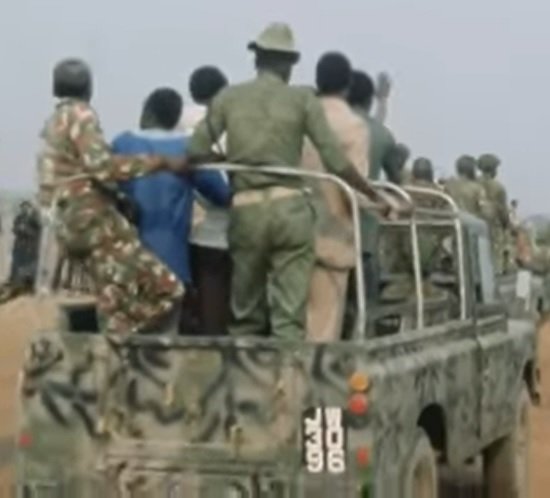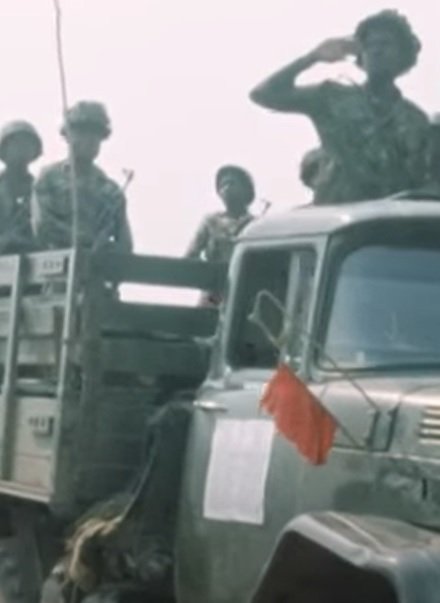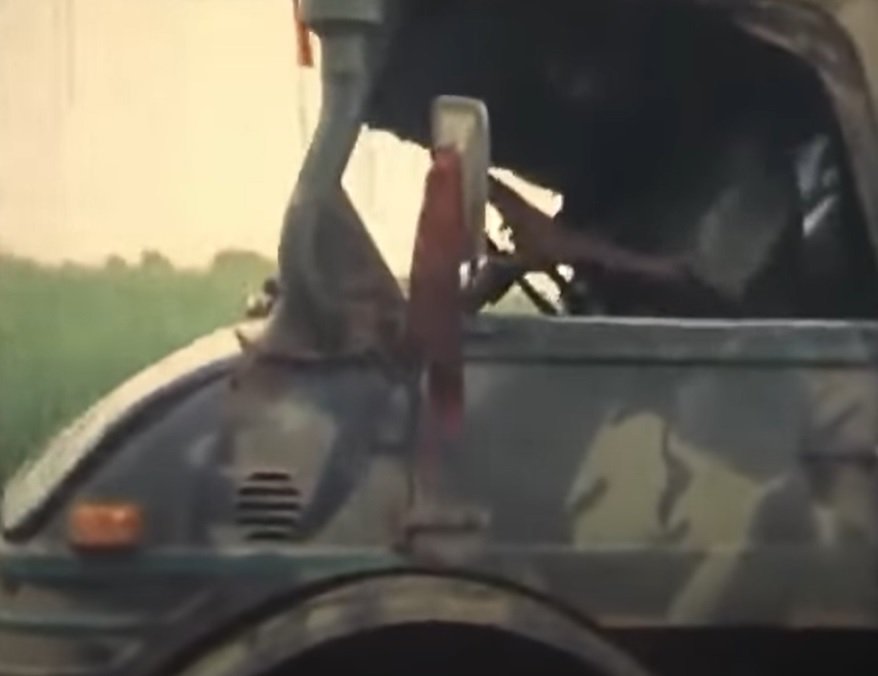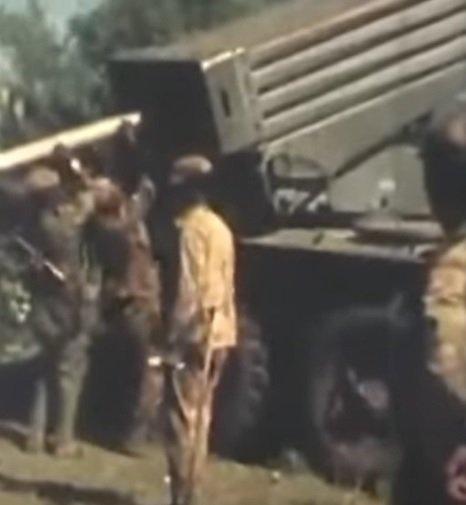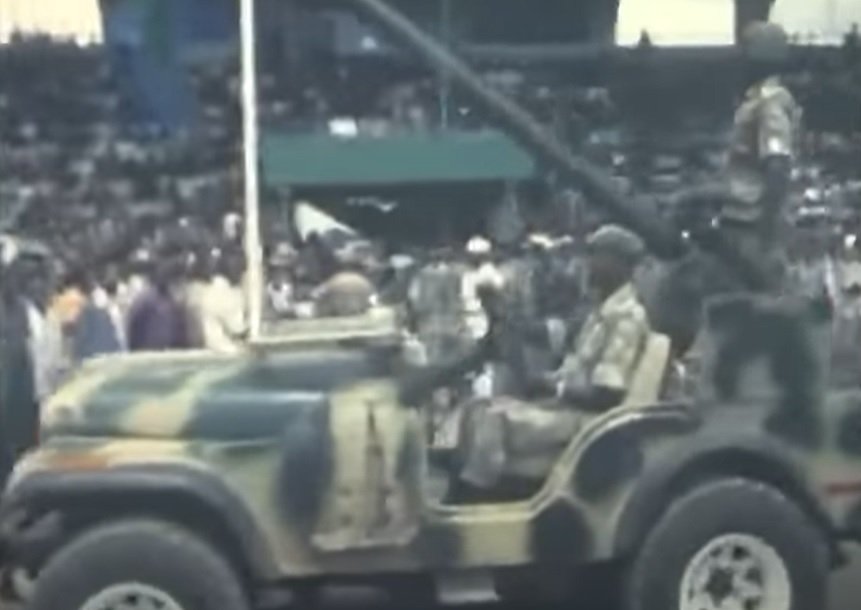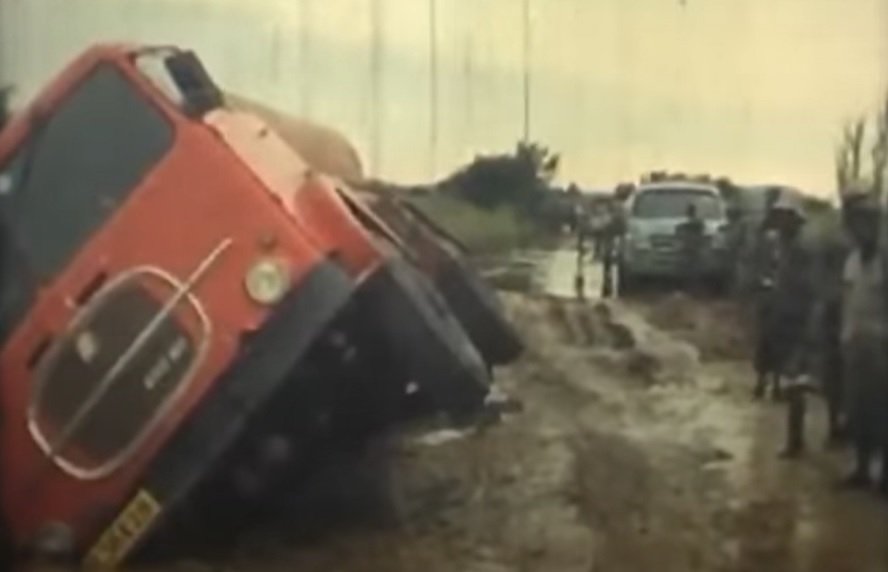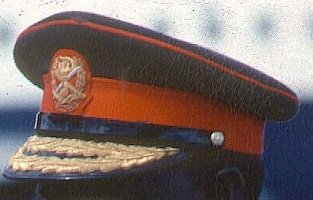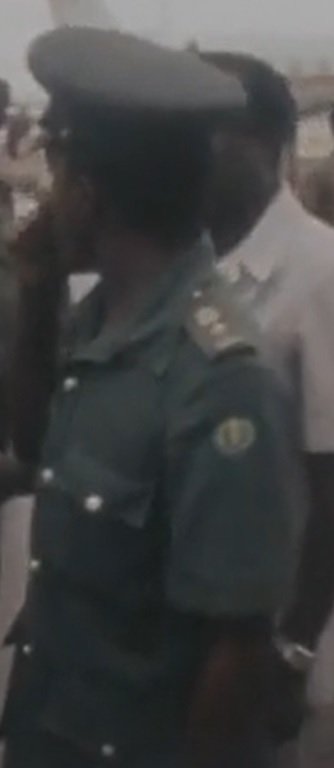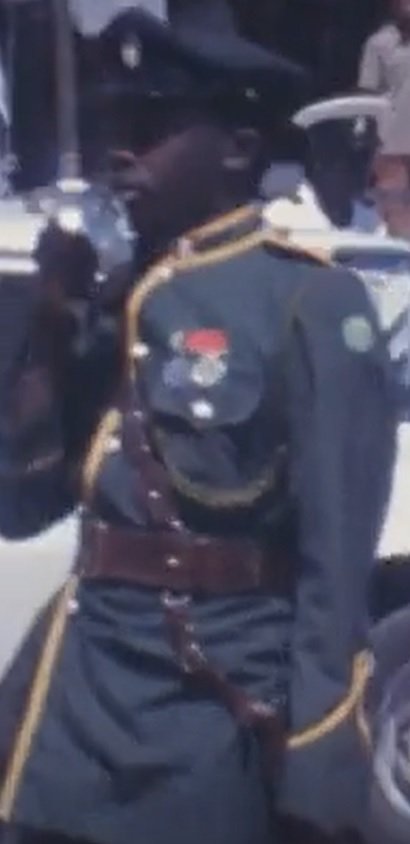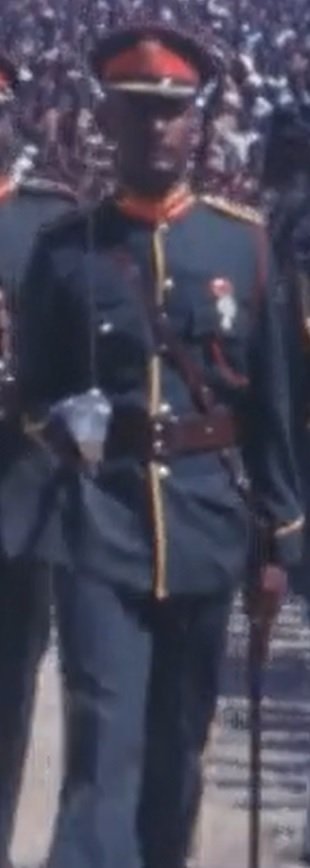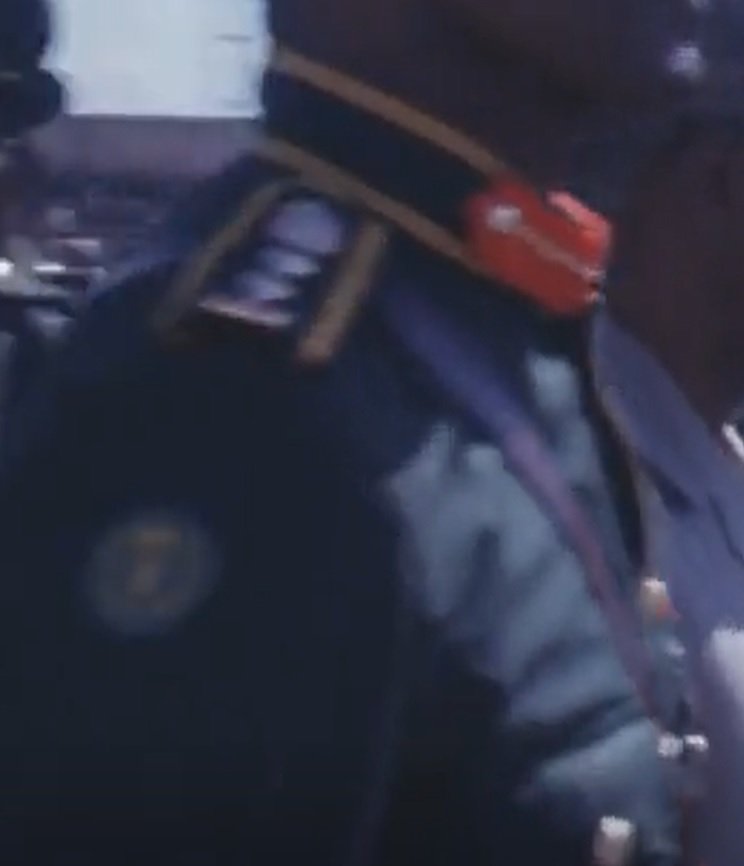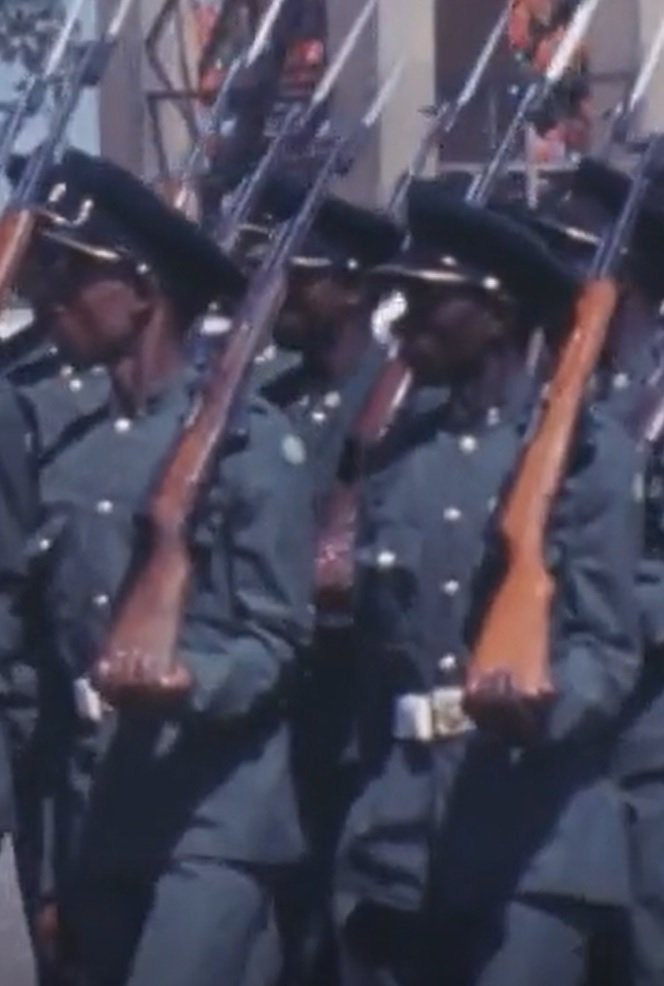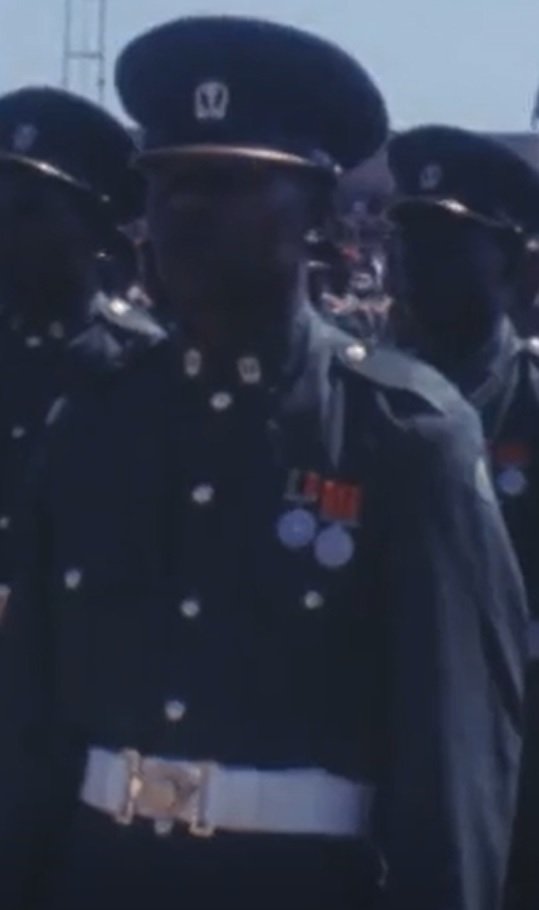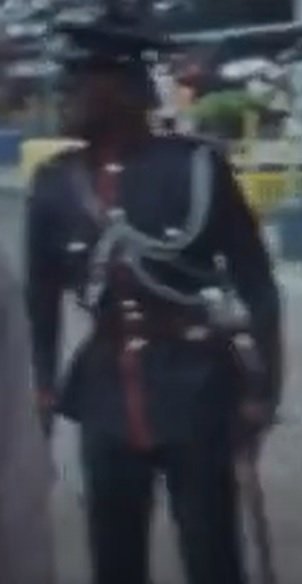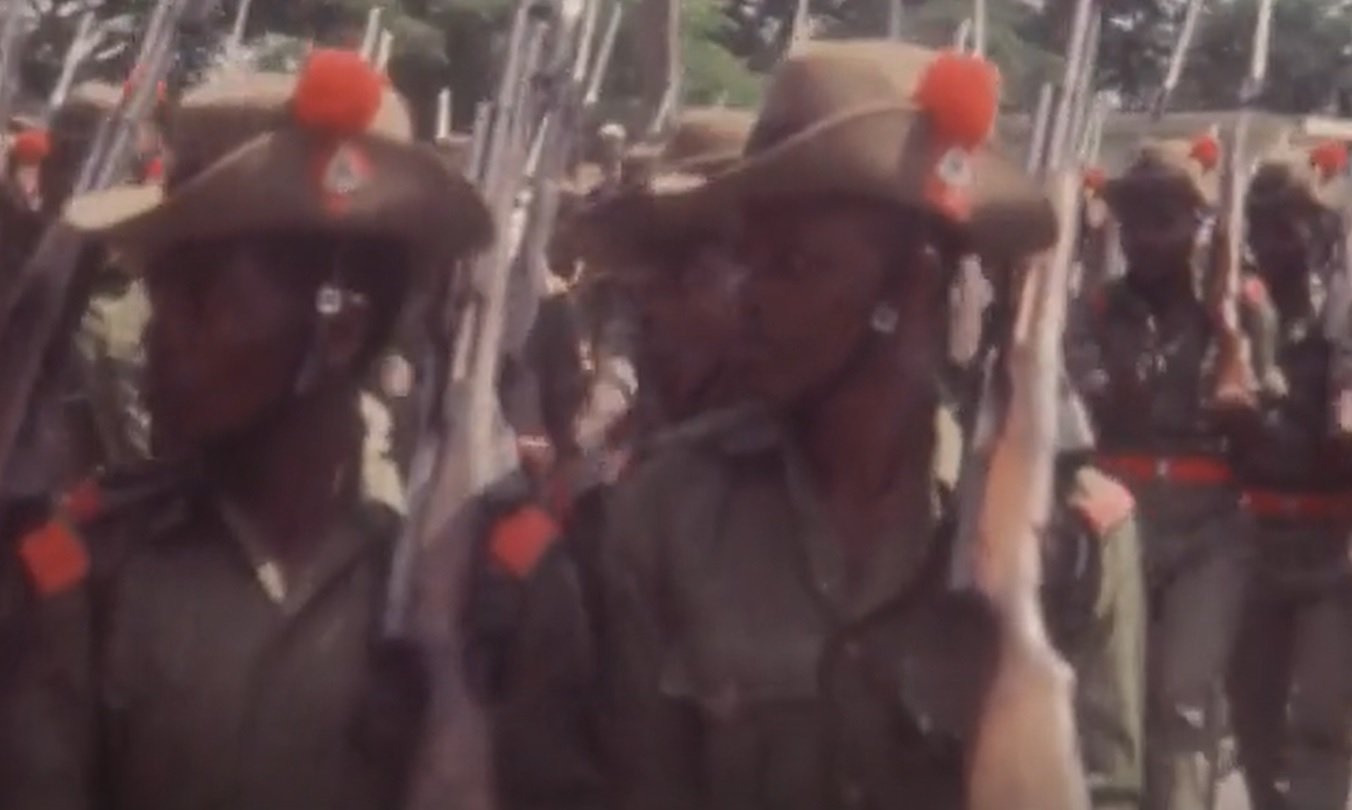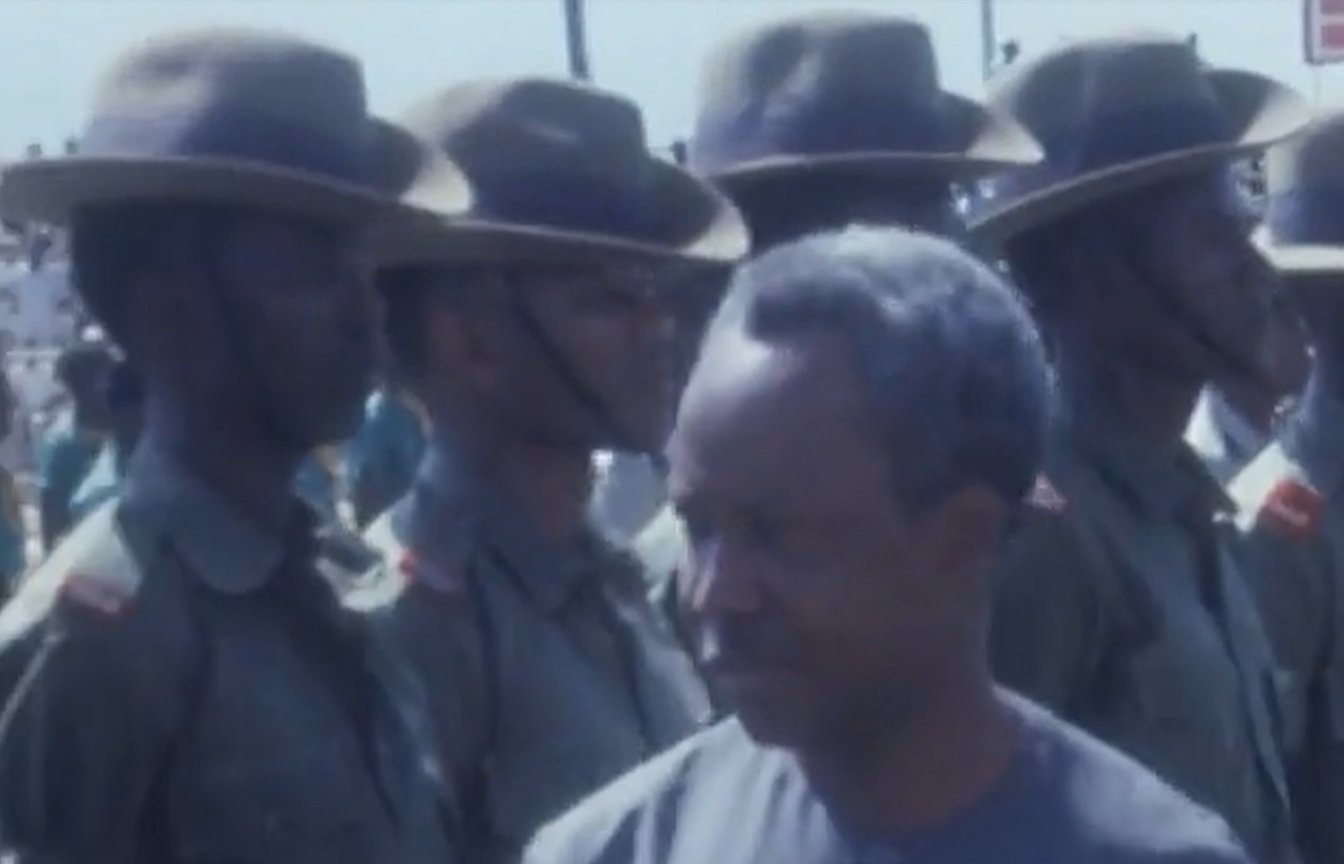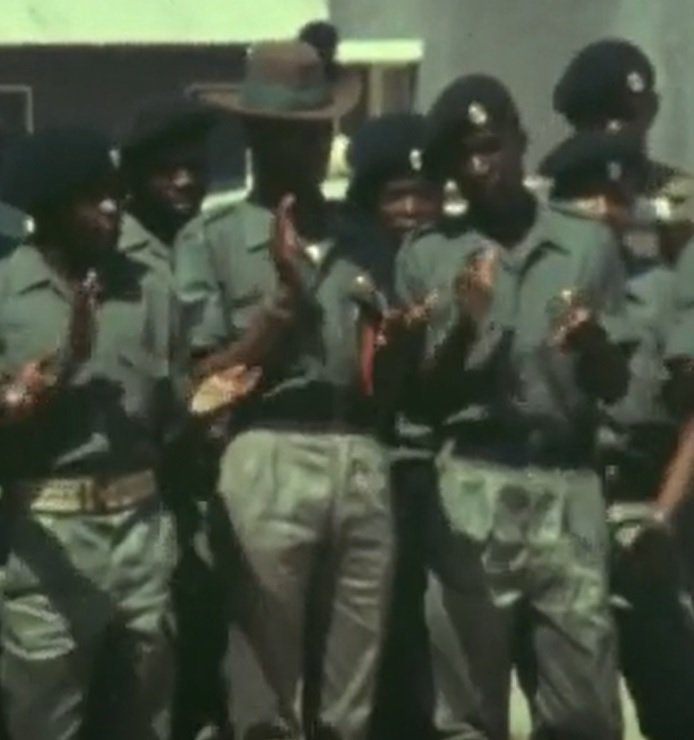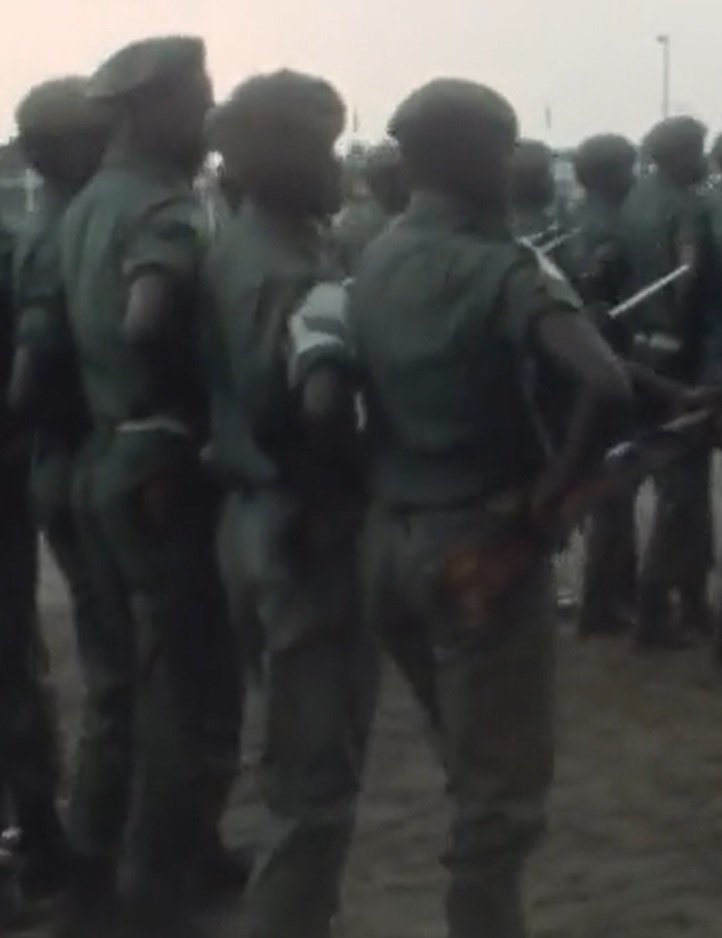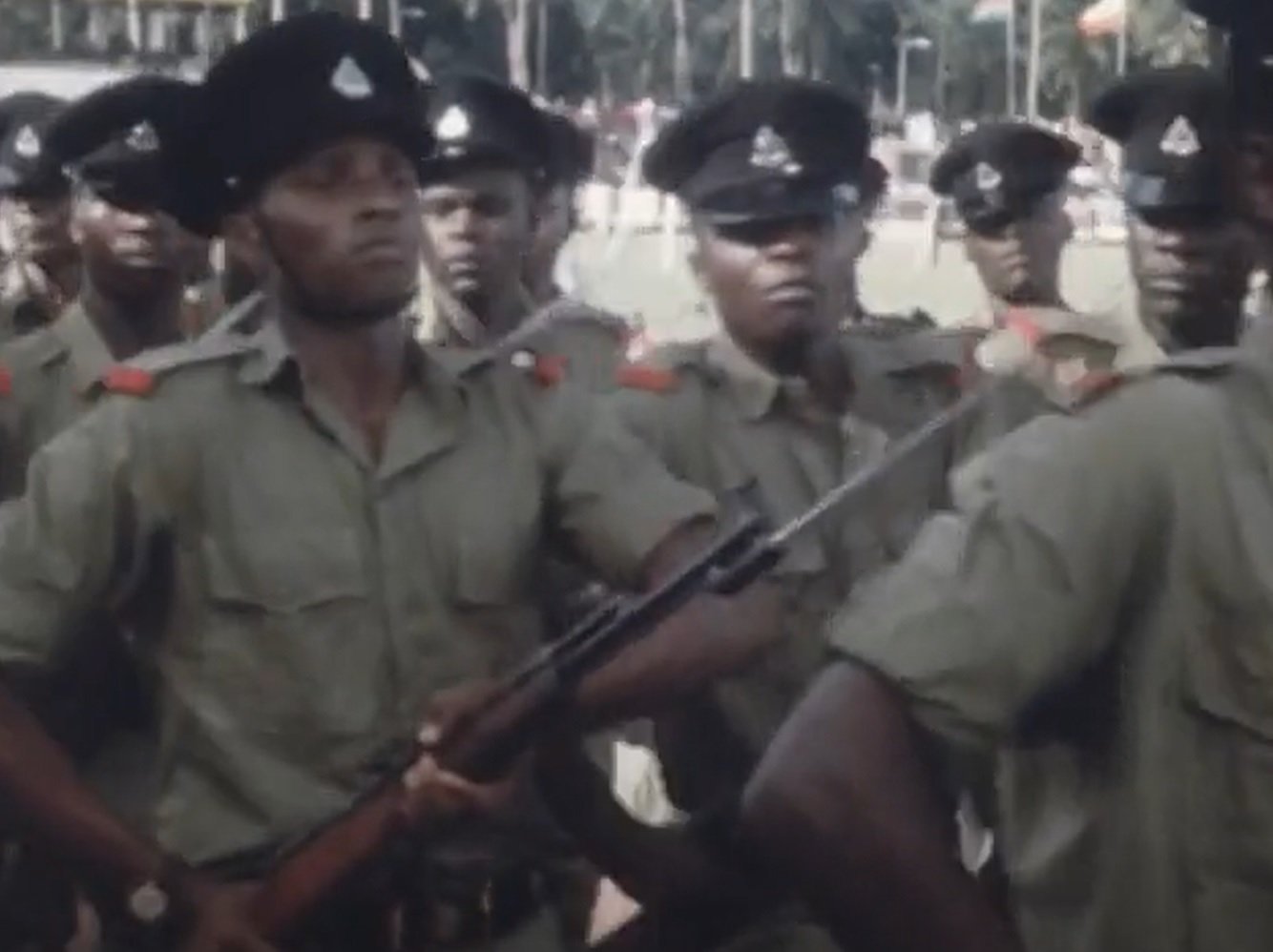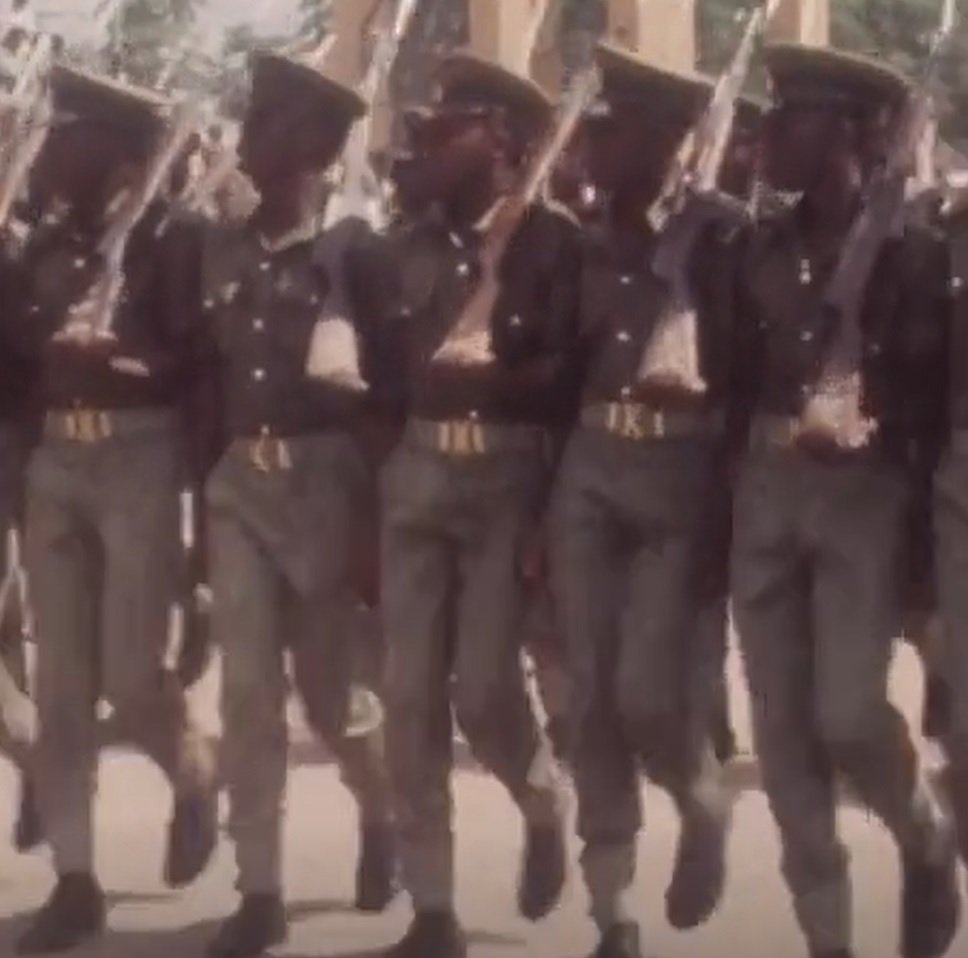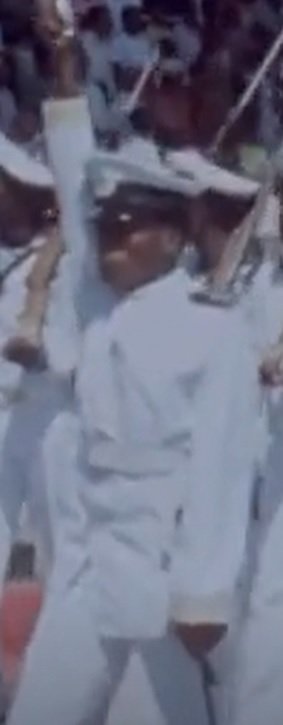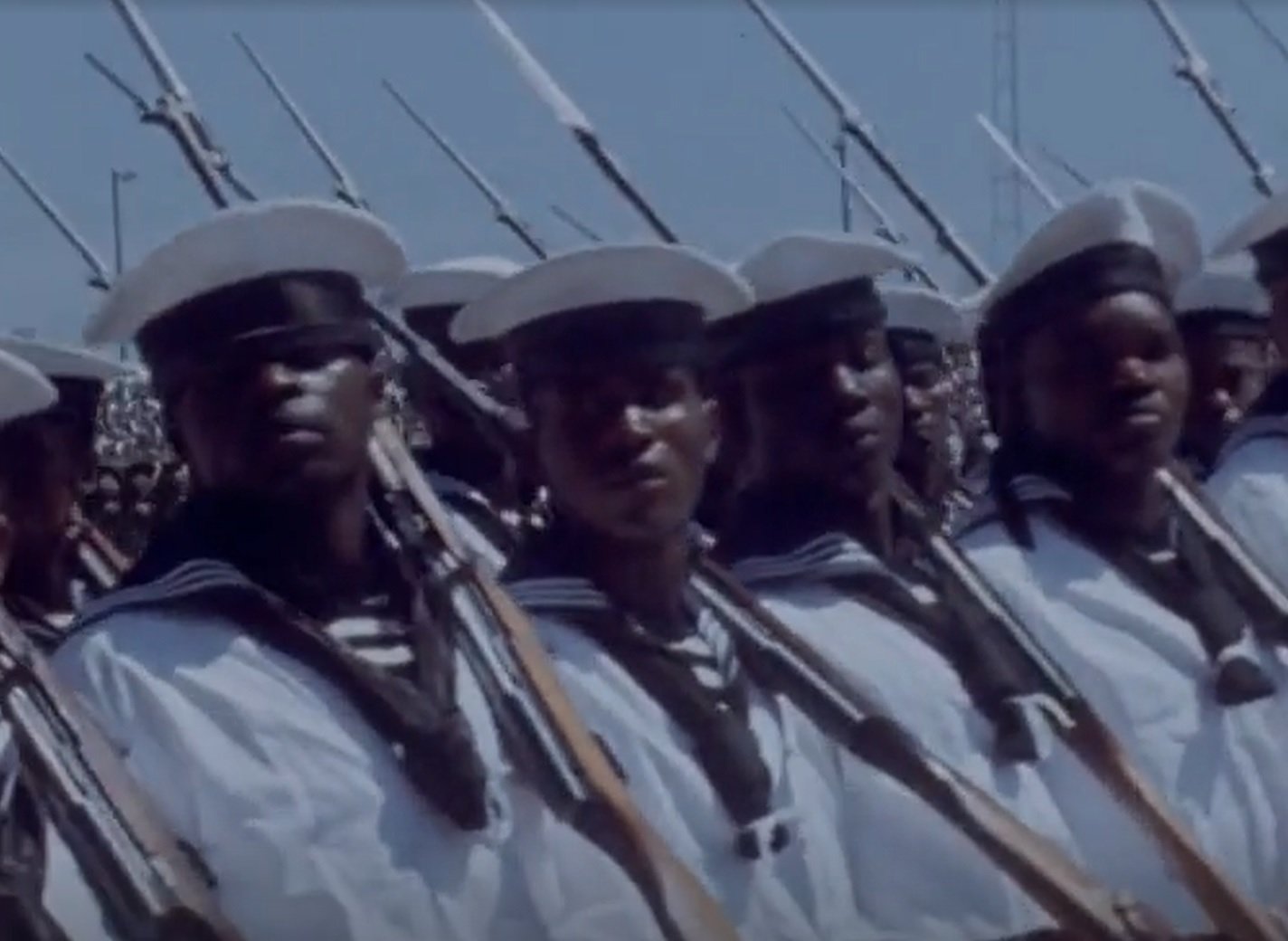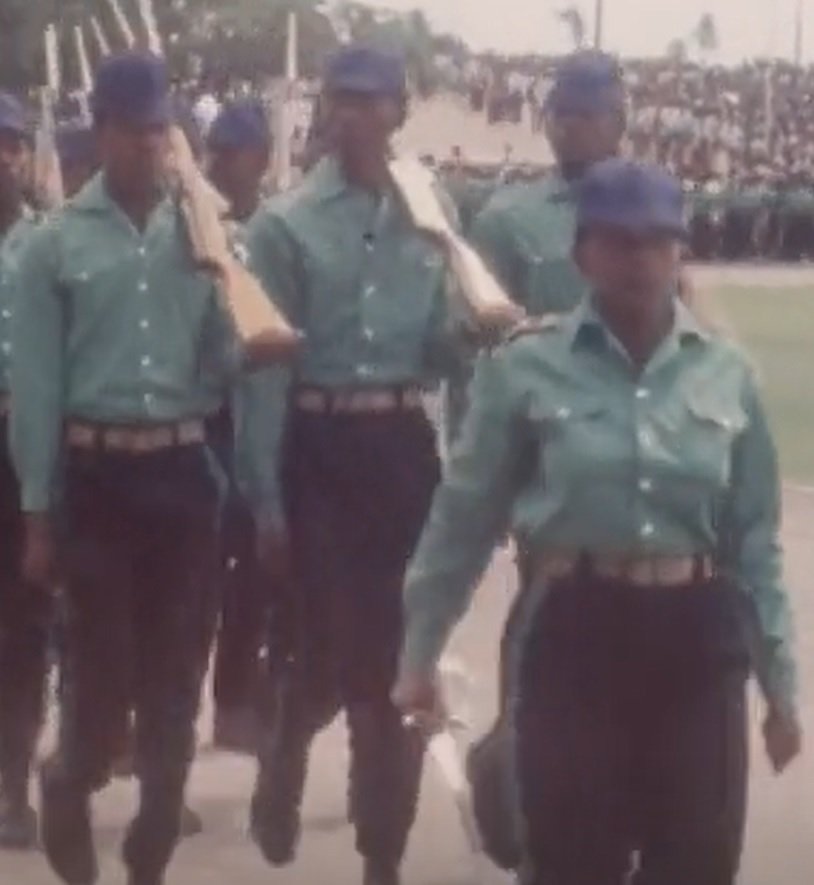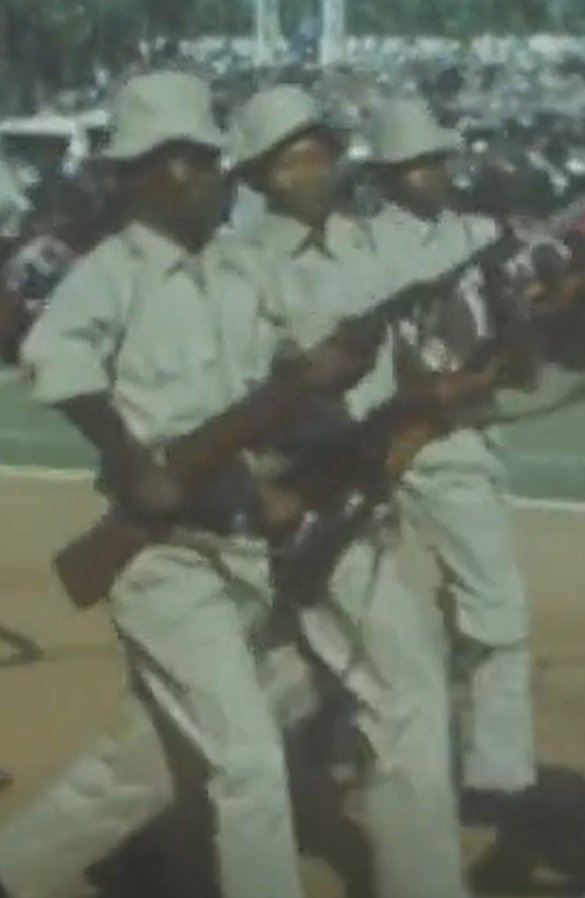SOME NOTES ON The Tanzanian Army, 1978-1979
Introduction.
On this page I set down a few notes about the appearance of the Tanzanian army during their war with Uganda. There’s also a few comments about dress uniforms, etc.
1. Field uniform.
1.1. Jackets and trousers. Almost everyone seems to have worn a DPM uniform in Canadian style — the small, sloping breast pockets are distinctive. There’s a superb writeup of this uniform here. The shades seen in footage vary quite enormously — some uniforms are in the original DPM shades, others are so faded as to almost appear a single colour, with everything in-between. The jackets and the trousers frequently don’t match. On closer inspection, many of the patterns appear to have a brighter, redder brown than the standard DPM colouring. I’m tempted to conjecture that many of these uniforms were locally made, under no doubt more straitened circumstances than the uniforms manufactured in Canada, and the lower-quality colours tended to fade under field conditions.
A few other patterns can occasionally be seen. Most common (but still rare compared to the DPM) is a rather vivid brushstroke [figs. 4-5]. The context vaguely suggests that this was the uniform worn by the Tanzanian-supported anti-Amin Ugandan forces. Elsewhere, single figures have a greenish “lizard” pattern [fig. 6] and what looks like Belgian “jigsaw” (perhaps the relatively subdued copy of it manufactured in Zaire) [fig. 7]. The last item is seen worn by a senior officer and is no doubt a private purchase.
1.2. Other clothing. An rather eye-catching feature is the extensive use of greatcoats, overcoats, raincoats and so on. These were presumably a reaction to rainy weather as and when it struck. The greatcoats [figs. 8, 10] seem to be actual army greatcoats, perhaps from Soviet or other eastern bloc stores. Dark blue raincoats [fig. 9] are seen quite commonly, and may have been regulation, and beyond that we see an enormous miscellany of coats and capes [fig. 28] in all sorts of colours, many of them no doubt civilian items.
British-style reinforced jumpers can also be seen, in a darkish (sometimes olive) green with light green reinforcements.
1.3. Headgear was unsurprisingly varied — I’d put it, very approximately, as a 50-50 split between helmets and soft hats. No doubt helmets were worn in larger proportion under actual combat conditions. The helmets seem to be, from most to least common: M1s (or just the liners); Polish wz.64s [fig. 14]; and what seems to be the Bulgarian M51/72 or the Polish wz.67(??) [fig. 10] Helmets were generally worn without camouflage, although the occasional netting or natural foliage can be seen. Green artificial foliage [fig. 13] is very common in footage of army parades, but I don’t believe I’ve ever seen it used in the field(?). For soft hats, we have peaked field caps, in tan, green or DPM, jungle hats in the same spread of colours, the occasional dark green beret, generally worn square on the head with the badge centred [figs. 16-17], and the very occasional slouch hat [figs. 19-20]. A distinctive feature of the DPM jungle hats is that they have particularly small brims [fig. 15]. Caps are often seen worn under helmets [fig. 20].
1.4. Footwear was also fairly mixed — black military boots (ankle height with puttees or gaiters (often black), or calf height) or civilian waterproof boots in a variety of styles.
1.5. Rank insignia was worn on brassards for the men (either DPM or dark olive drab), and green shoulder slides for officers. Officers’ rank insignia was in black or dark green, except for generals where it was in gold, with red backing. Generals and colonels wore red collar tabs in the British fashion.
1.6. Branch or unit distinctions. We see fairly few of these in the field. There was evidently a system of lanyards — red is most common [fig. 24], but there was also a greenish yellow colour [fig. 25]. I can’t discern what these represented — generals are seen with the red lanyard, but also other officers. These weren’t typically worn in the field. Stable belts also make very occasional appearances in the field — I think I can see red, red with narrow yellow stripes, blue over yellow, white over blue, green over blue with narrow black central stripe, and green or blue over red [figs. 26-30A]. The green-blue-black belt can be seen combined with the red lanyard [figs. 4, 26]. The green/blue and red belt is seen in a group with another man wearing a red beret.
1.7. Equipment and weaponry. The equipment presents a confusing picture — more or less anything that could have been carried was carried by someone. I think it’s probably best to talk about this by reference to the weapons used. The starting point, so to speak, was a waistbelt of British 1958 pattern, or similar. The suspenders are rarely seen.
Most soldiers carried AK rifles of this or that model — one sees a mix of fixed and collapsible stocks. They seem, generally, to have been Soviet models, with the bayonet worn separately on the waistbelt [fig. 31], rather than the Chinese type with integral bayonet (these do appear, but, uncommonly). It’s very common to see two magazines taped together. Some men can be seen with chest rigs [fig. 32], or what seem to be locally-made magazine pouches (worn on the belt or over the shoulder) [figs. 33-34] but most seem to have carried their magazines in one or two 1958 pattern pouches, usually worn at the side or rear of the belt instead of the front.
Other soldiers carried an SKS — unclear to me if this was the Soviet or the Chinese model. Men with these generally wear Chinese-style pouch belts.
In terms of other equipment — 1958 pattern (or similar) canteens were worn, supplemented with an enormous variety of civilian models. Some men had certain other pouches from the 1958 pattern webbing, or other unidentifiable pouches, or anything else.
Other weapons — FALs were used, but much less commonly than AKs. RPKs and RPGs were used in large numbers.
1.8 Military police wore white gaiters, brassards and helmets.
2. Vehicles.
2.1. Tanks. Tanzania apparently fielded both Type 59 and Type 62 tanks — I lack the ability to distinguish between these. The base colour of the tanks was green. Sometimes they seem almost as if they have some indistinct, soft-edged lightish brown camouflage [fig. 49 for an example — the barrel especially], but at least in some cases I imagine this was merely dust and so on. Tree branches were used as natural camouflage. The identifying mark was a large white disc, carried on the glacis plate, both sides of the turret, and the rear. This seems to have been a “field sign” rather than any more deliberate of an insignia, and the discs are often rather misshapen. These vehicles were typically over-burdened with stowage and tank riders.
2.2 APCs. A couple of Type 63 APCs can be seen — either camouflaged, as here, or in solid green. Some of the latter were marked with a white disc on each side. The one on the reverse seems to have always been half on the rear itself, and half on the roof, as in fig. 50B.
2.3. Other military vehicles. Soft-skin vehicles seem to have mostly solid dark green, with a small red flag as national identification, but a few can be seen with camouflage of varying styles and quality. In post-war footage we a truck with a white square as identifying mark [fig. 54]. I haven’t seen this in wartime footage.
A drawing available on google images shows a Tanzanian grad rocket truck, in green with crude camouflage along the lines of the vehicle in fig. 53. I haven’t seen this in any photographs or footage, but it’s entirely plausible.
2.4. Civilian vehicles were impressed into service as transports on a large scale. Some of these might have flown the usual red penannt, as e.g. fig. 55A.
3. Dress and service uniforms.
These are an entire topic in themselves, and this is a very superficial summary. Images are taken from Elizabeth II’s visit to Tanzania in 1979, and various pieces of newsreel from various dates in the 1970s.
3.1. Officers’ service dress. A greyish green tunic [fig. 56] with standing collar and pleated breast pockets (and no skirt pockets). Pointed cuffs. Five gold buttons on the front, one on each breast pocket and shoulder strap. Gold circular Tanzanian army badge on the collar (in metal) and on each upper sleeve (embroidered in yellow on a green disc with blue outline) [fig. 57]. Rank worn on slides in the same colour as the tunic, with insignia in gold metal. Rifle-green caps with circular Tanzanian army badge on the band. Field officers(?) had a row of gold brad at the edge of the cap peak. Brown waistbelts and Sam Browne belts. Black shoes. Colonels and above wore red collar tabs and caps with red bands and piping, a more elaborate badge, and two rows of gold foliage [fig. 58]. Officers wore lanyards, at least sometimes, and generals large gold aiguillettes piped red. Other officers can also be seen with aiguillettes, in gold and piped in various(?) colours — this is unclear to me.
Officers also had a greyish-green four-pocket tunic with short sleeves. This had the Tanzanian army badge on the upper sleeves like the full dress uniform. The rifle-green cap seems to have been worn. Rank seems to have been on slides, but in a bright contrasting colour.
3.2. The “honour guard”. I don’t know the official name of this unit, but one commonly sees it at ceremonies, etc. As officers’ service dress except where noted. all ranks seem to have had silver buttons instead of gold. Men wore white waistbelts with gold circular buckles, and had brass trim on their cap peaks. Officers’ tunics were piped yellow (pointed cuffs, front flap, collar) and the trousers had a double yellow stripe. Shoulder straps were piped yellow, with silver rank insignia worn directly on them. Caps seem to have had gold decoration at the edge of the peak. I can see one officer in this uniform with a red lanyard [fig. 62], and another with a yellow-green lanyard [fig. 61], perplexingly.
3.3. Various other parade/service uniforms seen in footage. I can’t begin to identify any of these, so I’ll just describe the unit distinctions.
An “honour guard” style uniform, but piped red instead of yellow [fig. 66].
Slouch hats with dark blue bands and red flashes and pompons, red stable belts and red flashes on shoulder straps [figs. 67-68].
Slouch hats with green bands and dark blue pompons, red lanyard [fig. 69].
Black(?) beret and green over blue stable belt(??) (presumably the green-black-blue one seen at figs. 4 and 26) [fig. 70].
Olive green beret [fig. 71].
Dark cap with silver badge, red flashes on shoulder straps [fig. 72].
Khaki caps with dark bands [fig. 73].
Naval unit in square rigs, etc. No text on the cap bands. Officers with cuff ranks and shoulder strap ranks [figs. 74-75].
Evidently some sort of paramilitary or party militia unit with blue caps, light greyish green shirts and dark blue(?) trousers piped light blue [fig. 76].
A very simple plain fatigues and jungle hat uniform. This is only seen at parades and might be deliberately “proletarian” for left-wing political aesthetical reasons [fig. 77].
In this connection, I would note that most of the stable belts, the slouch hat with light band, and the slouch hat with red and yellow flash, as seen on the field uniforms [figs. 24-30], don’t appear here — evidently there’s more uniforms out there.
Written December 2022
Minor revisions 28 January 2024

